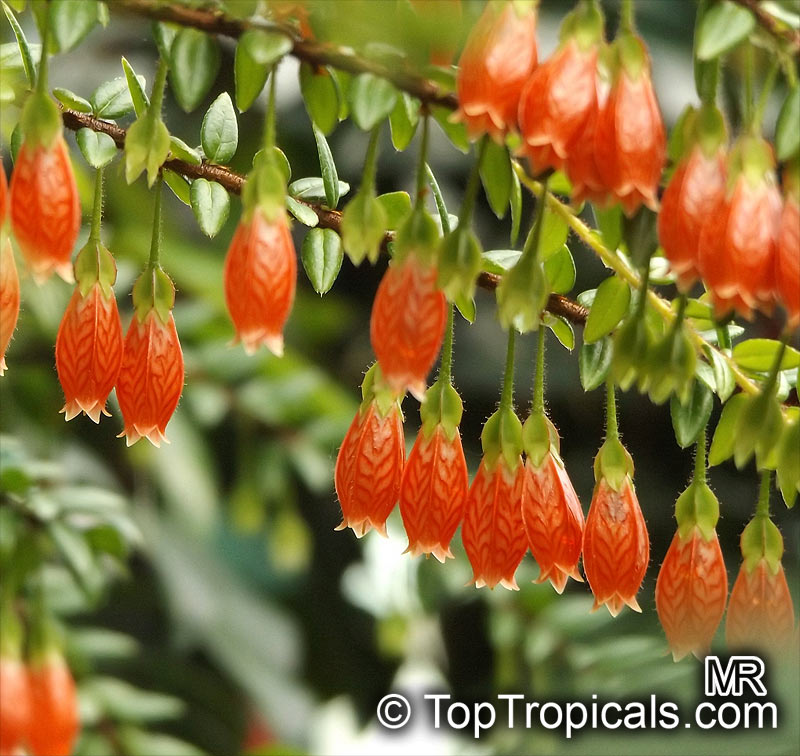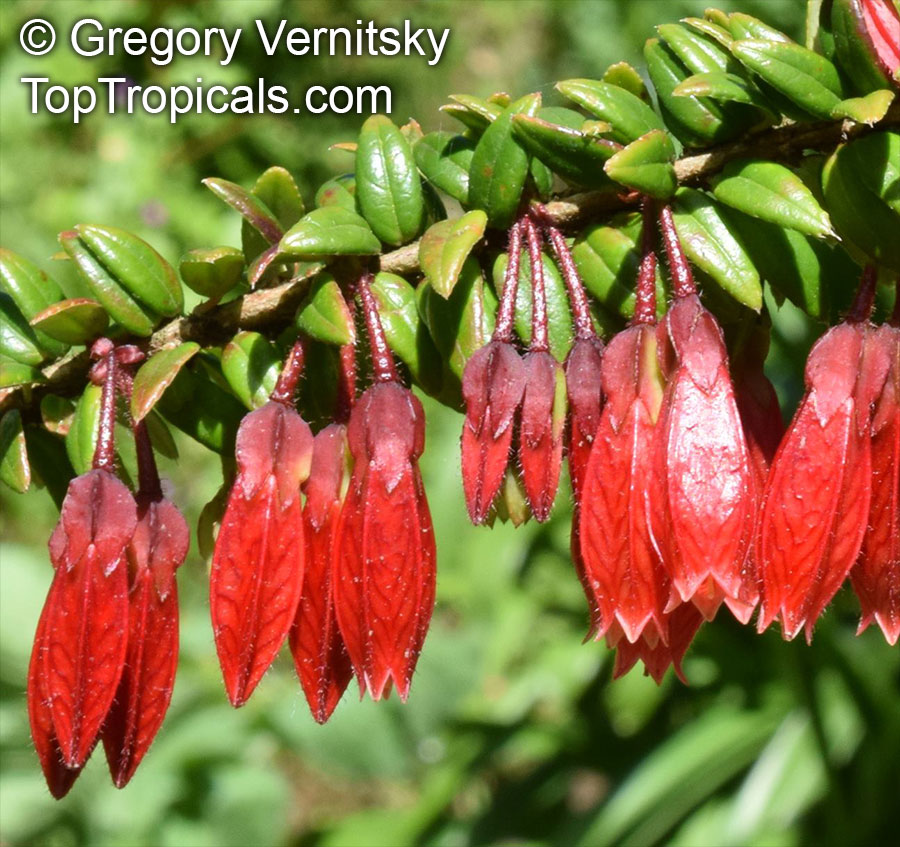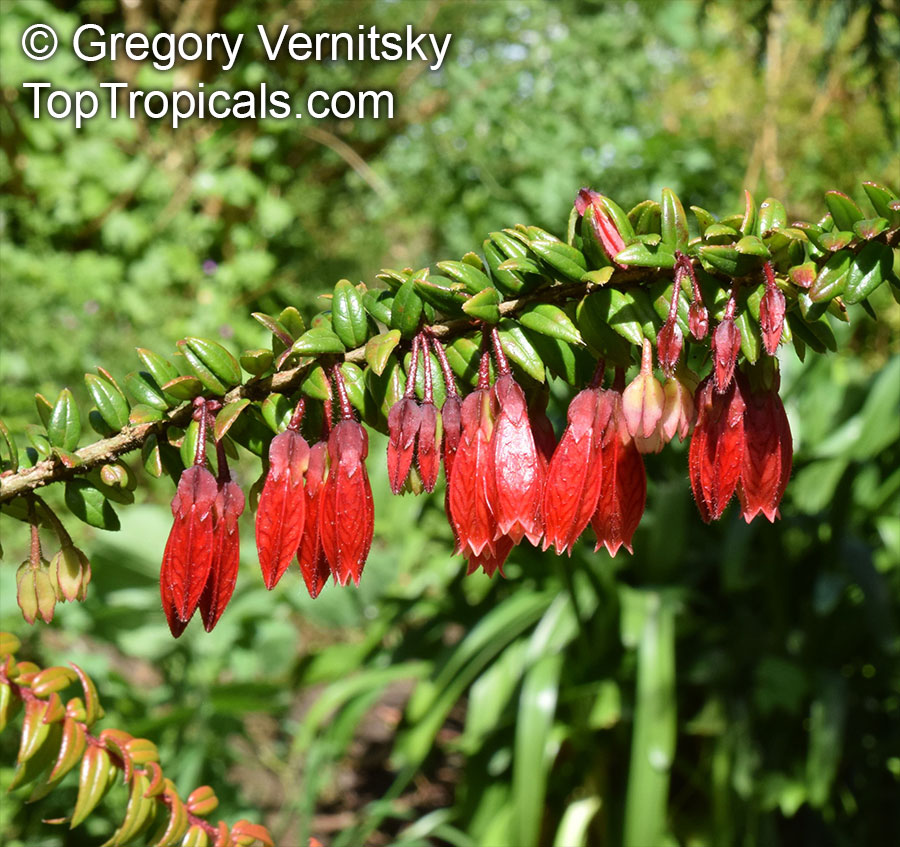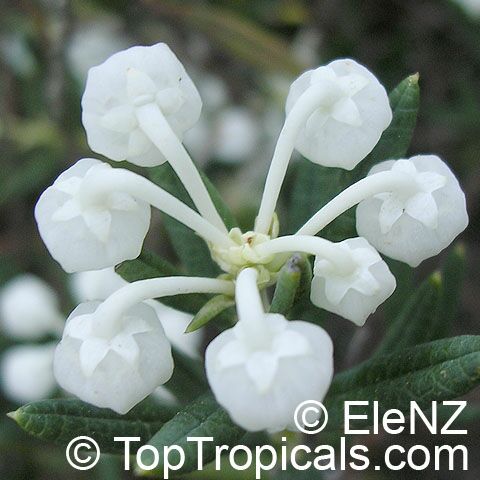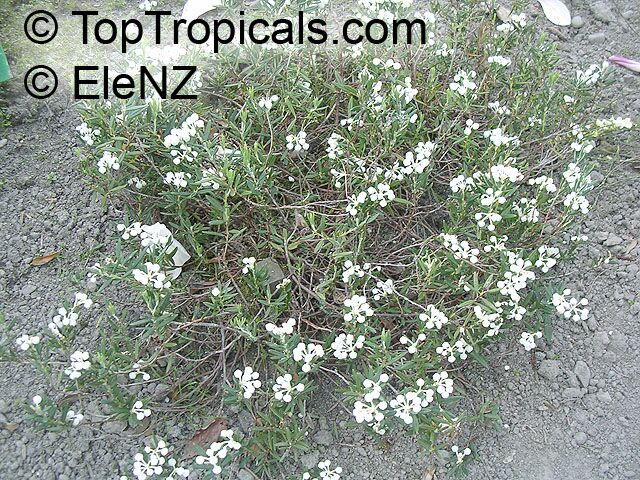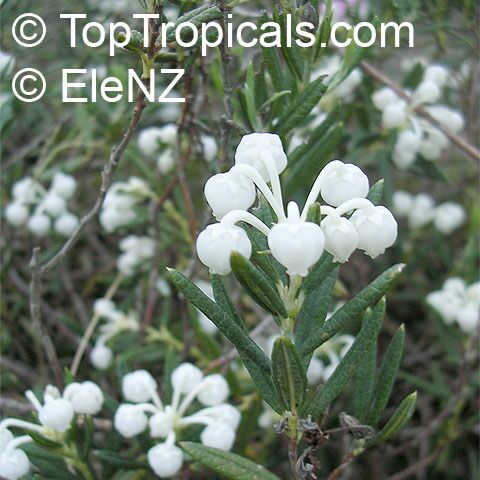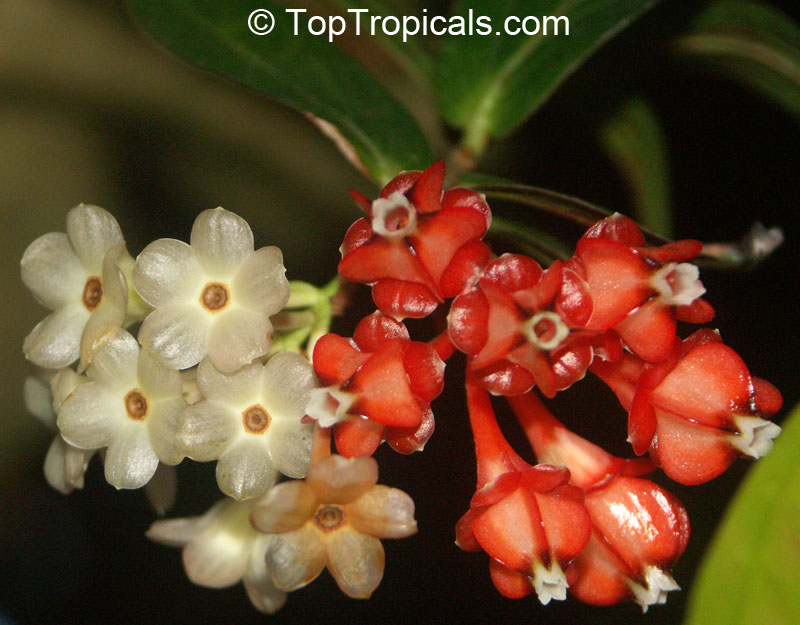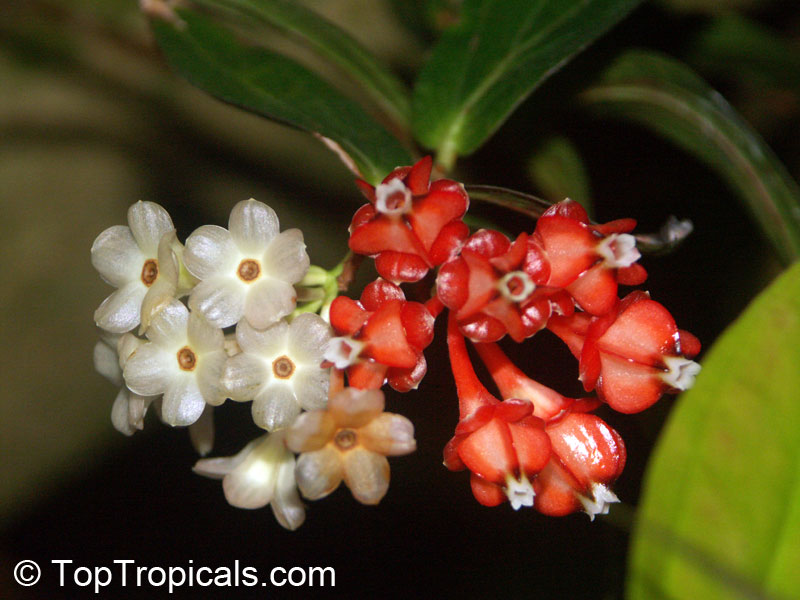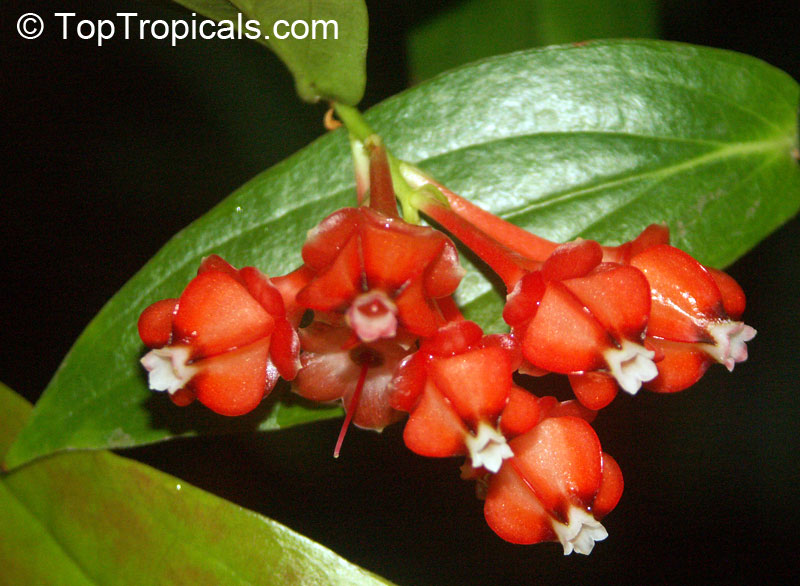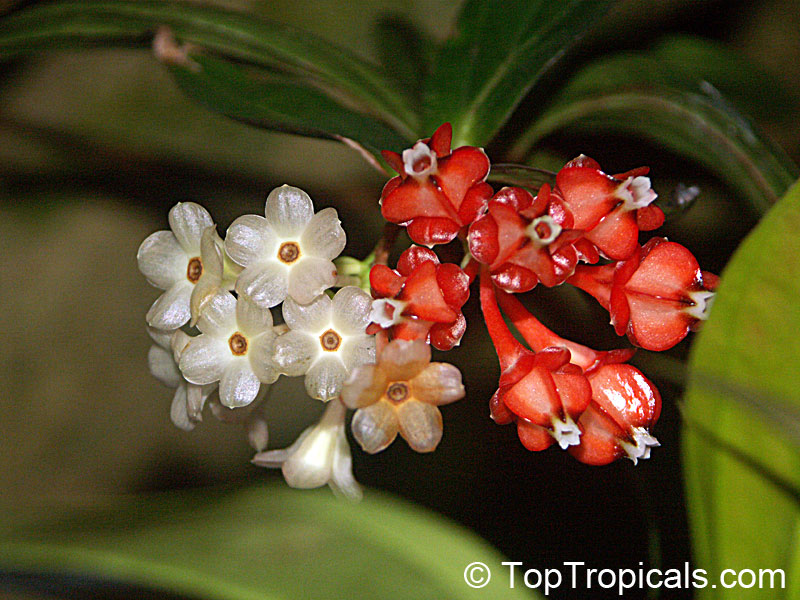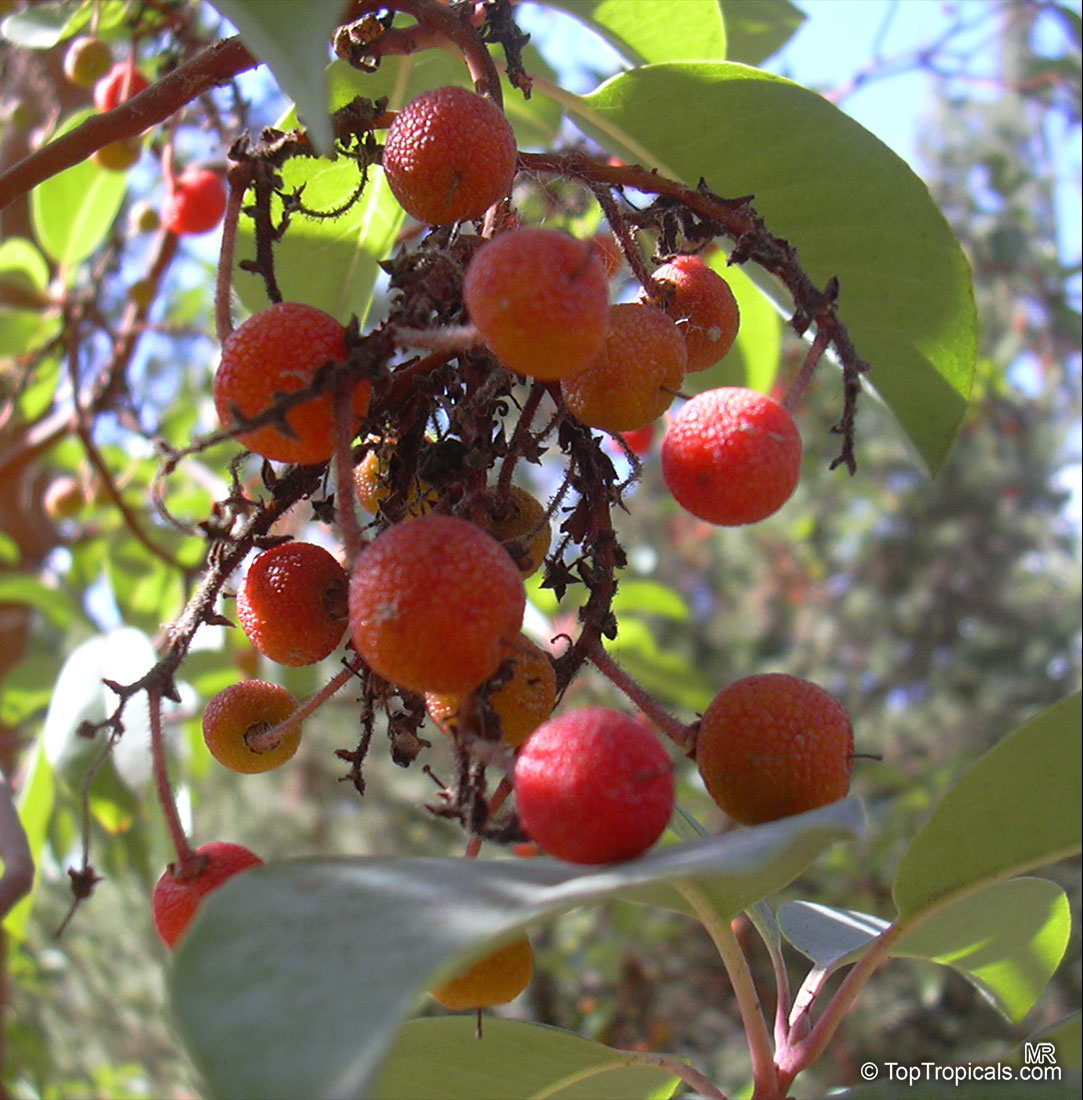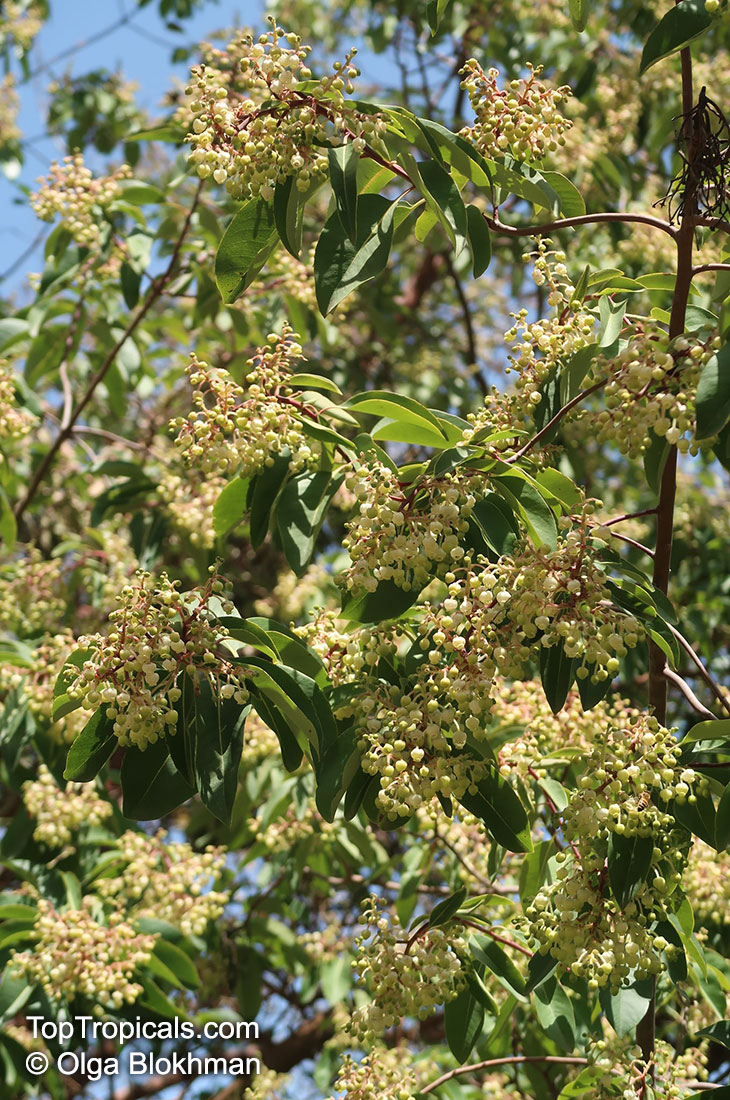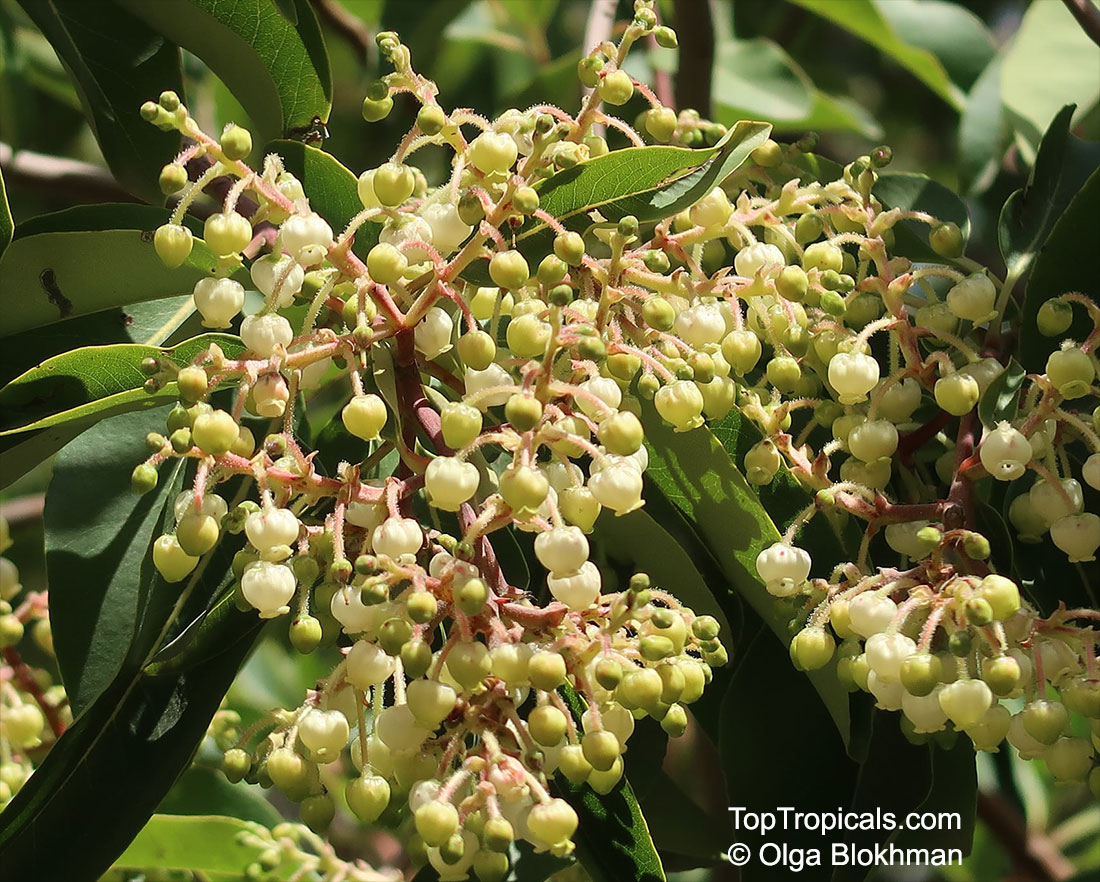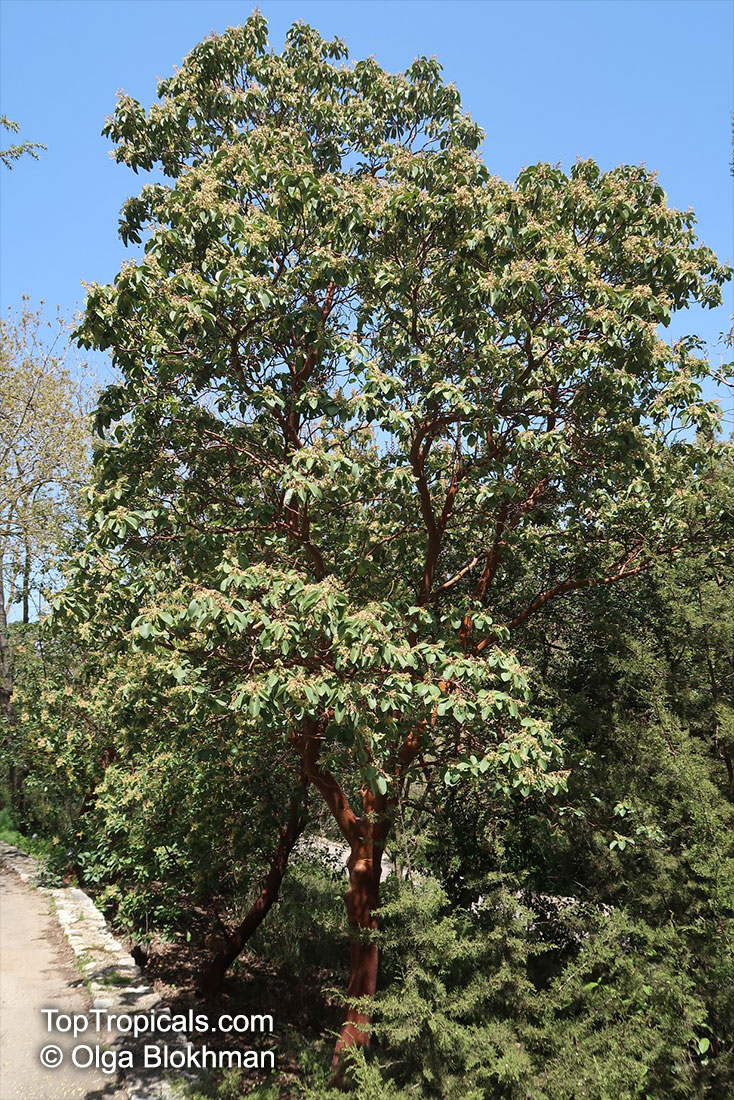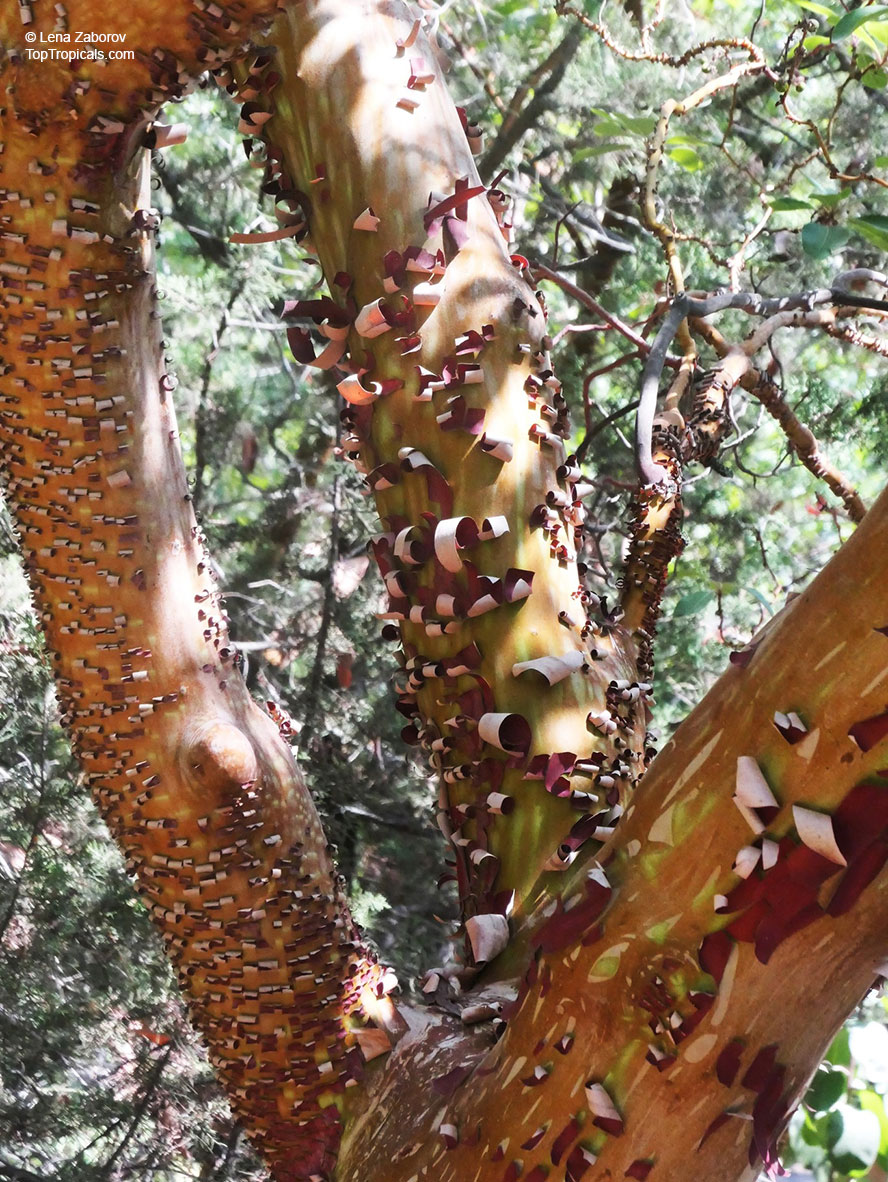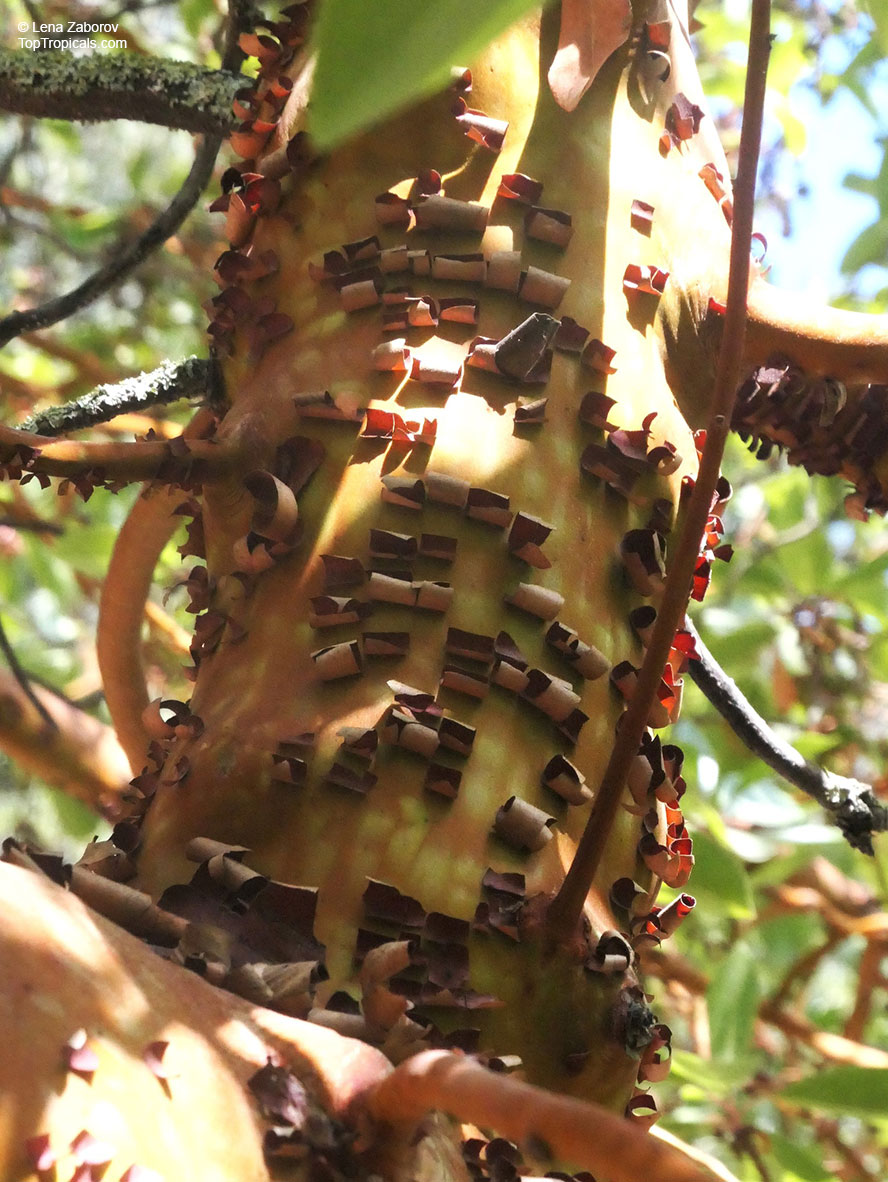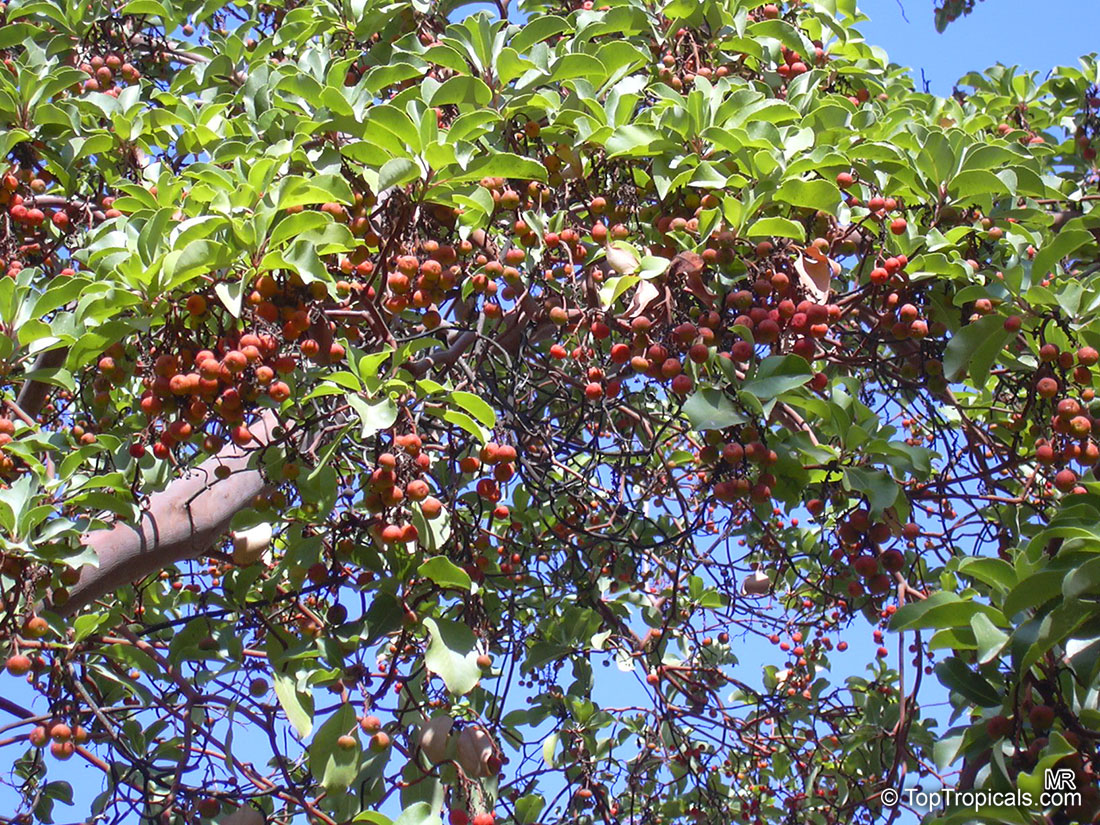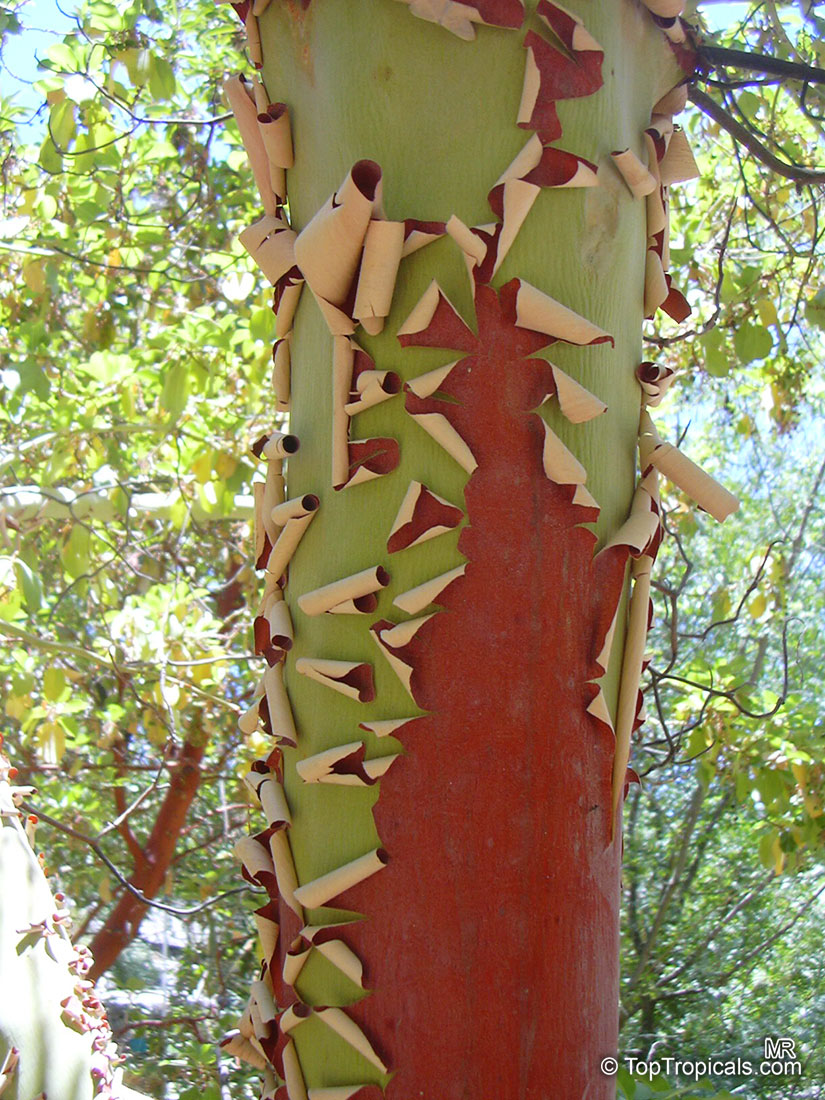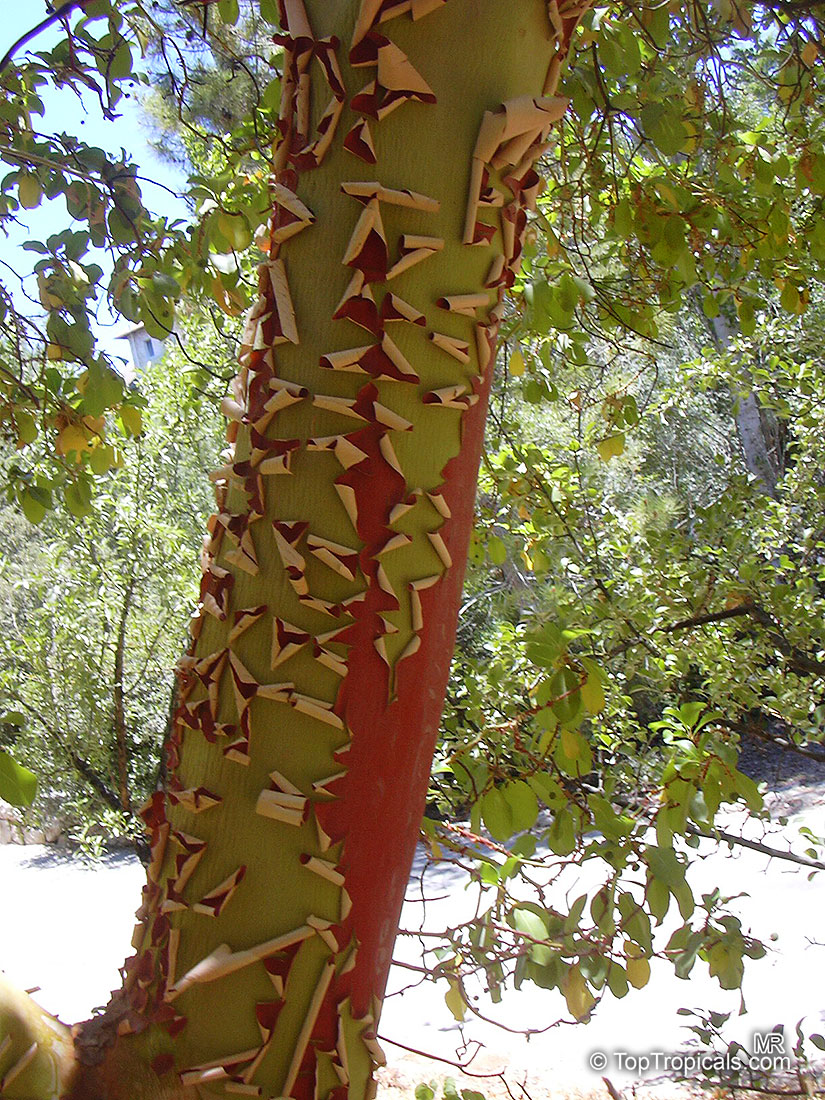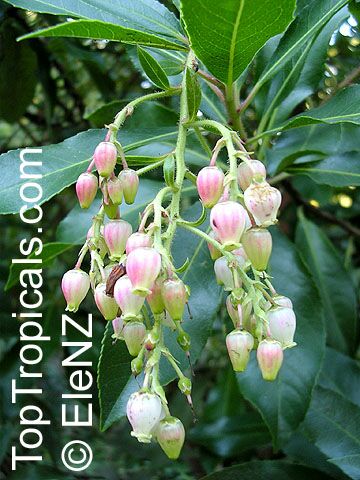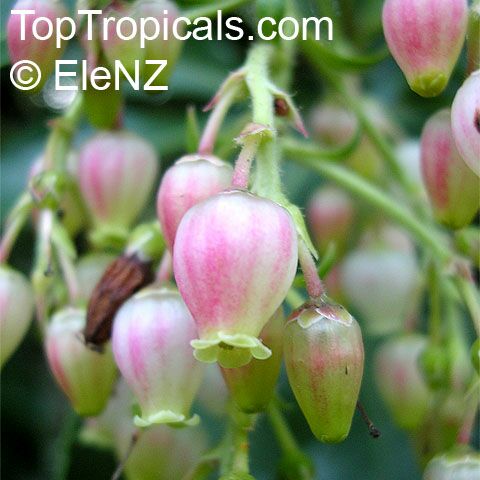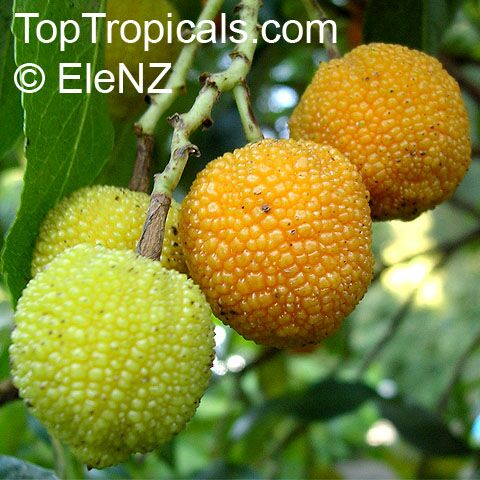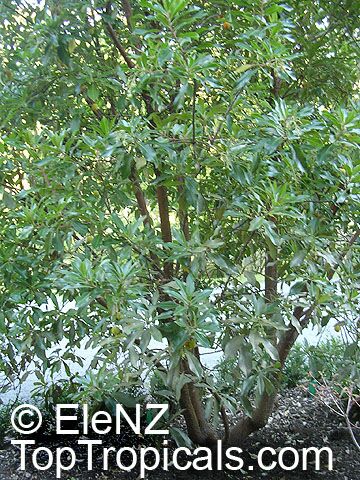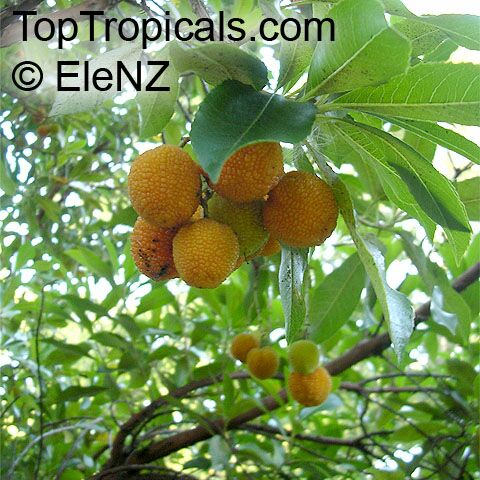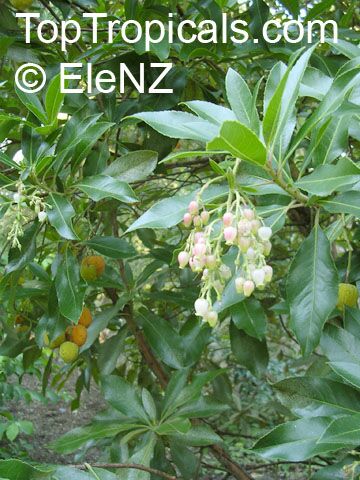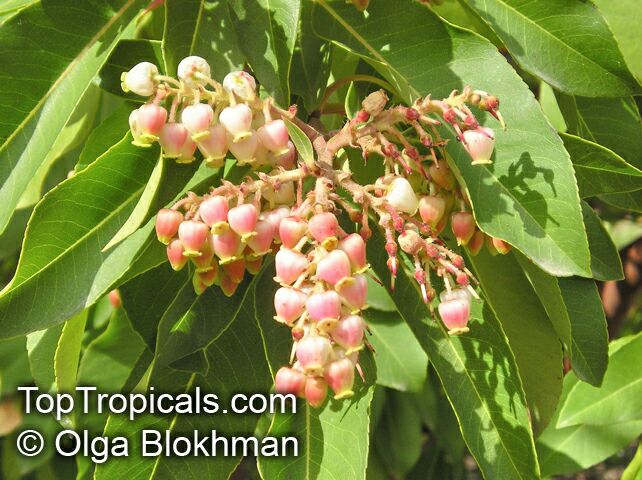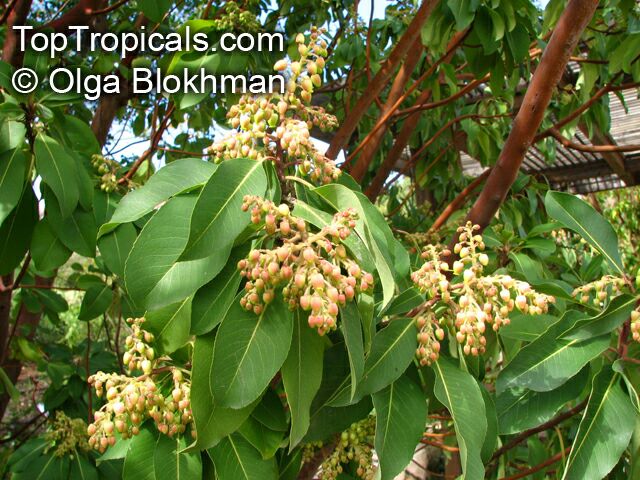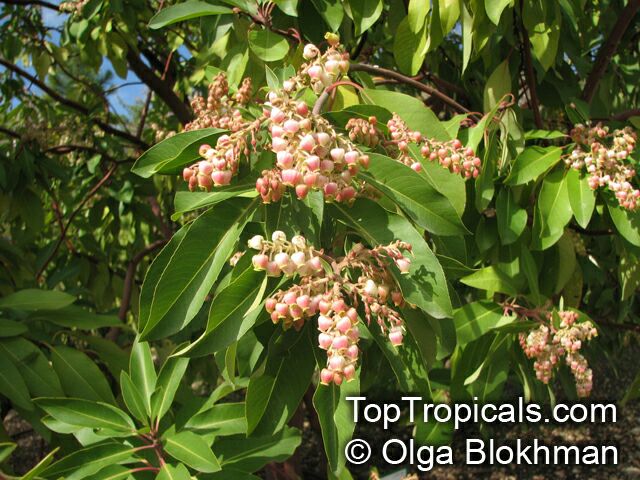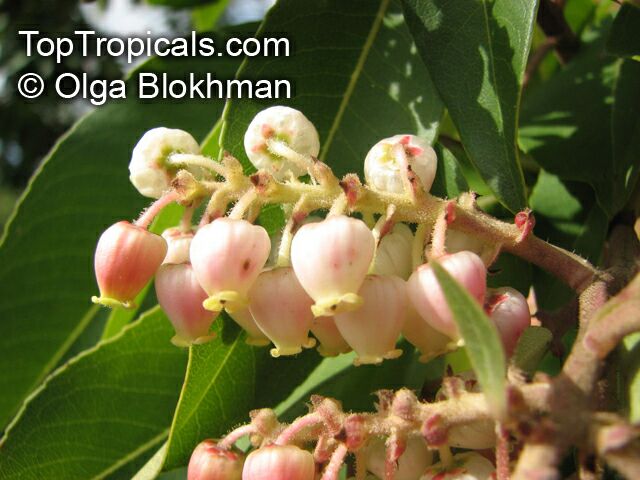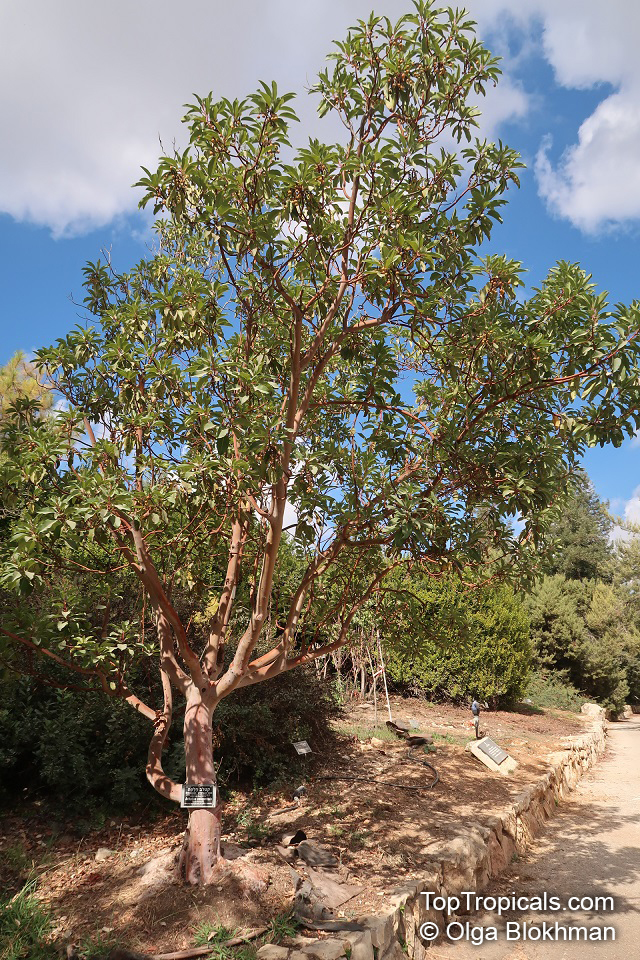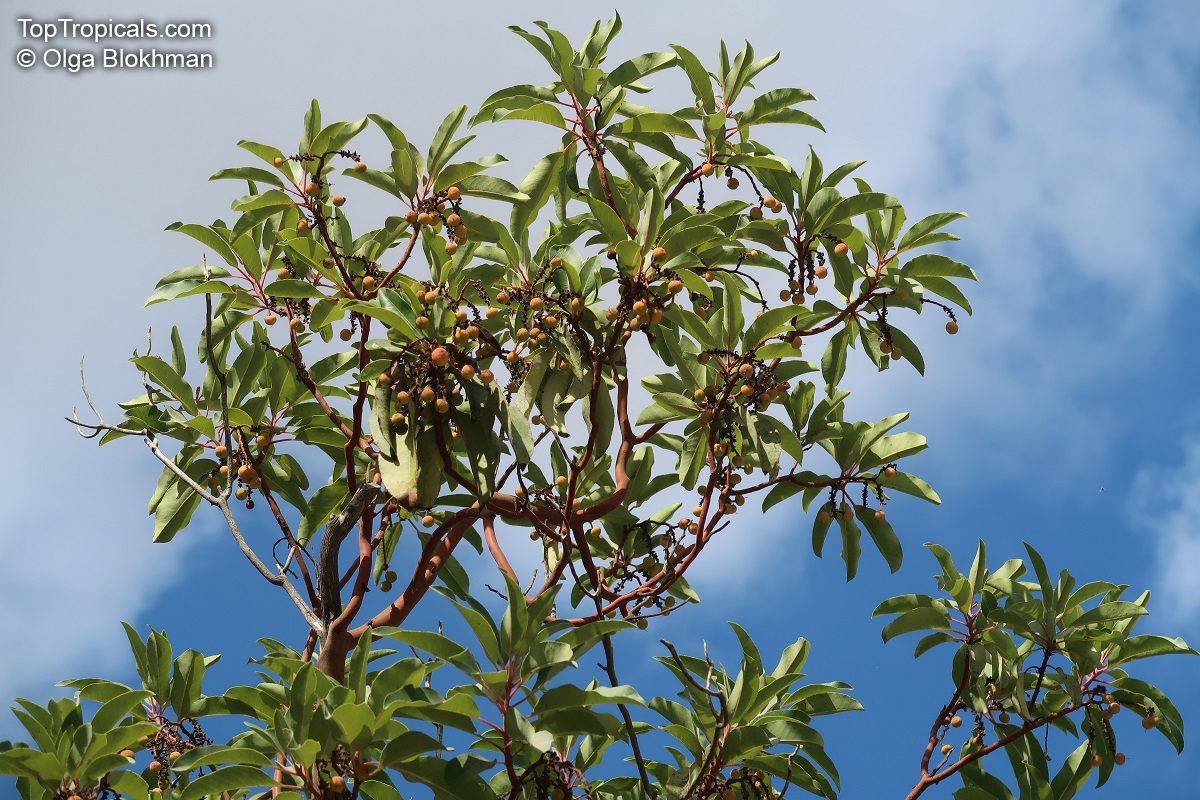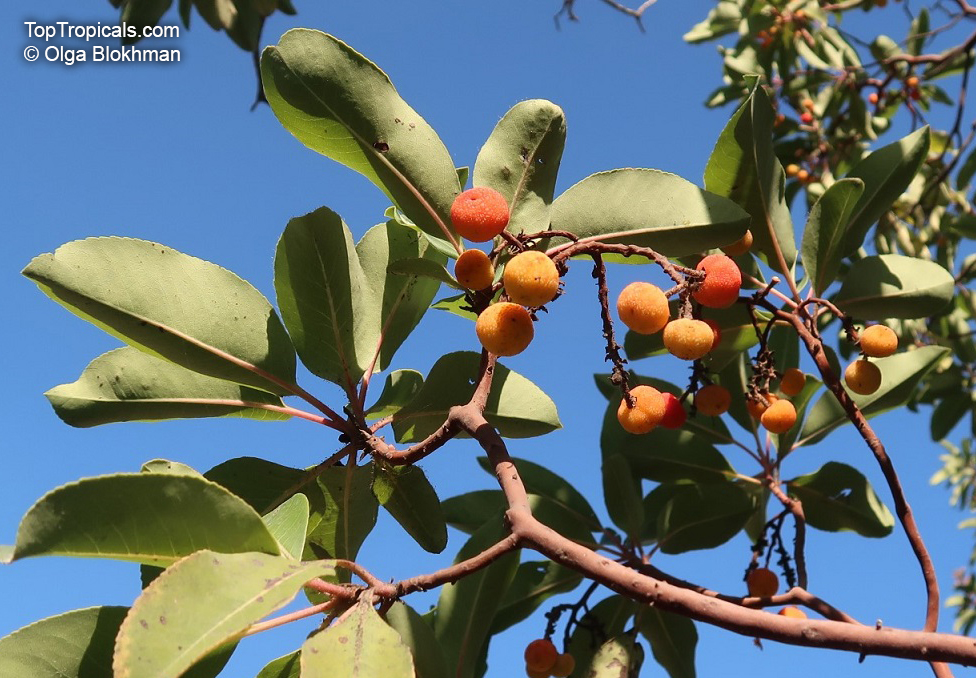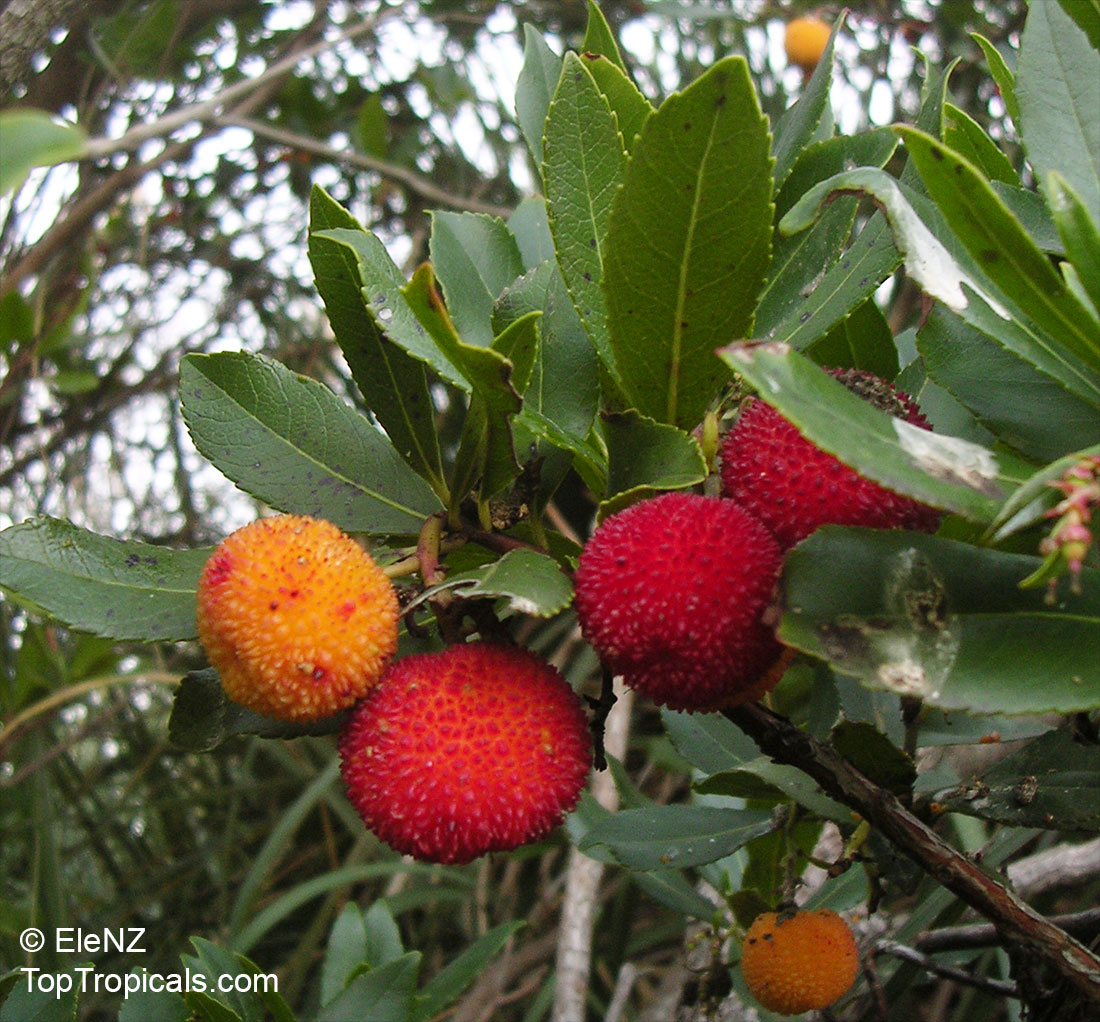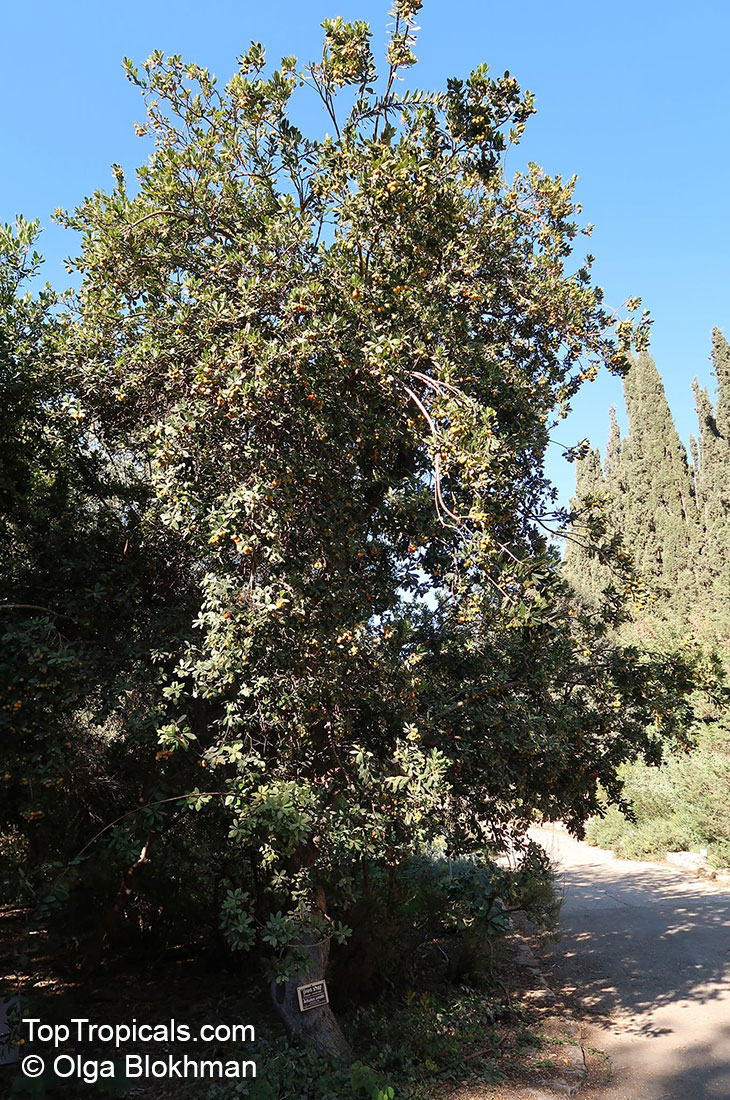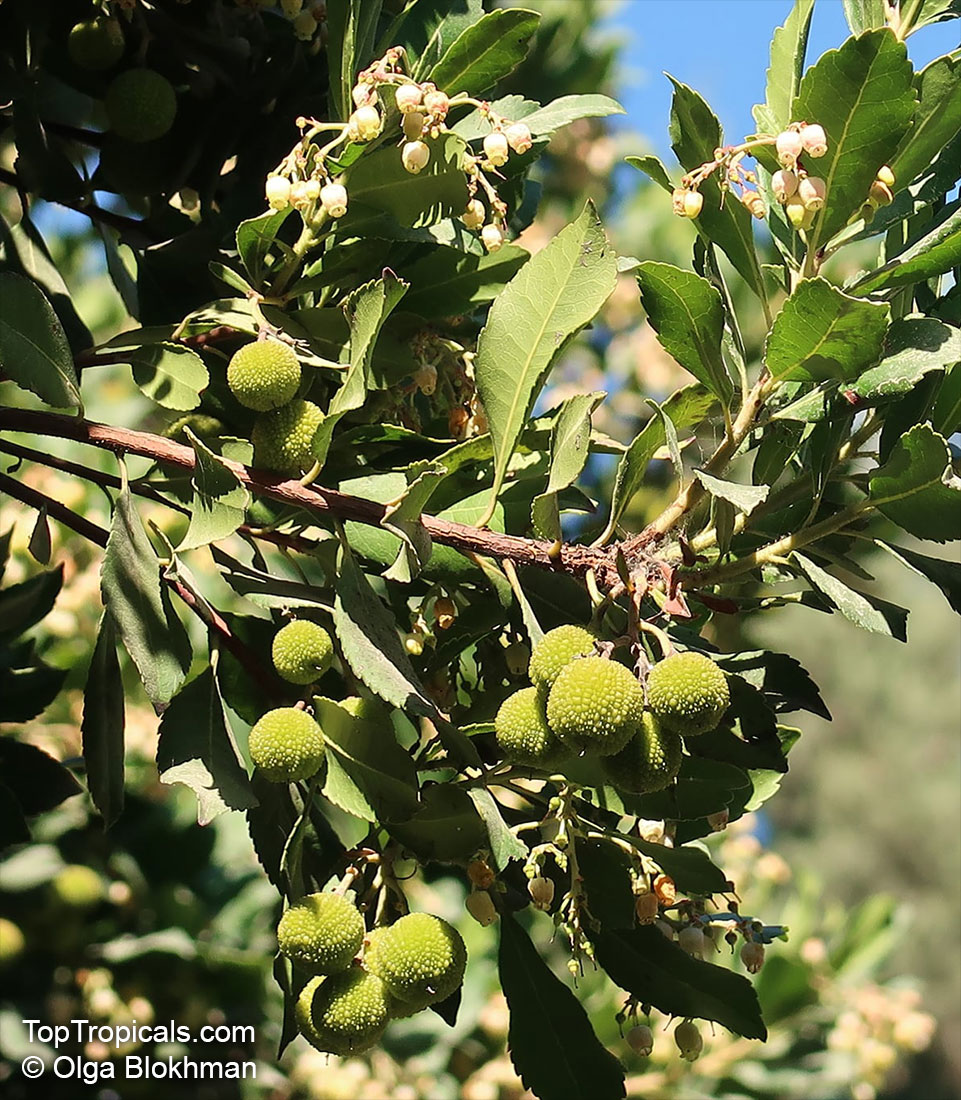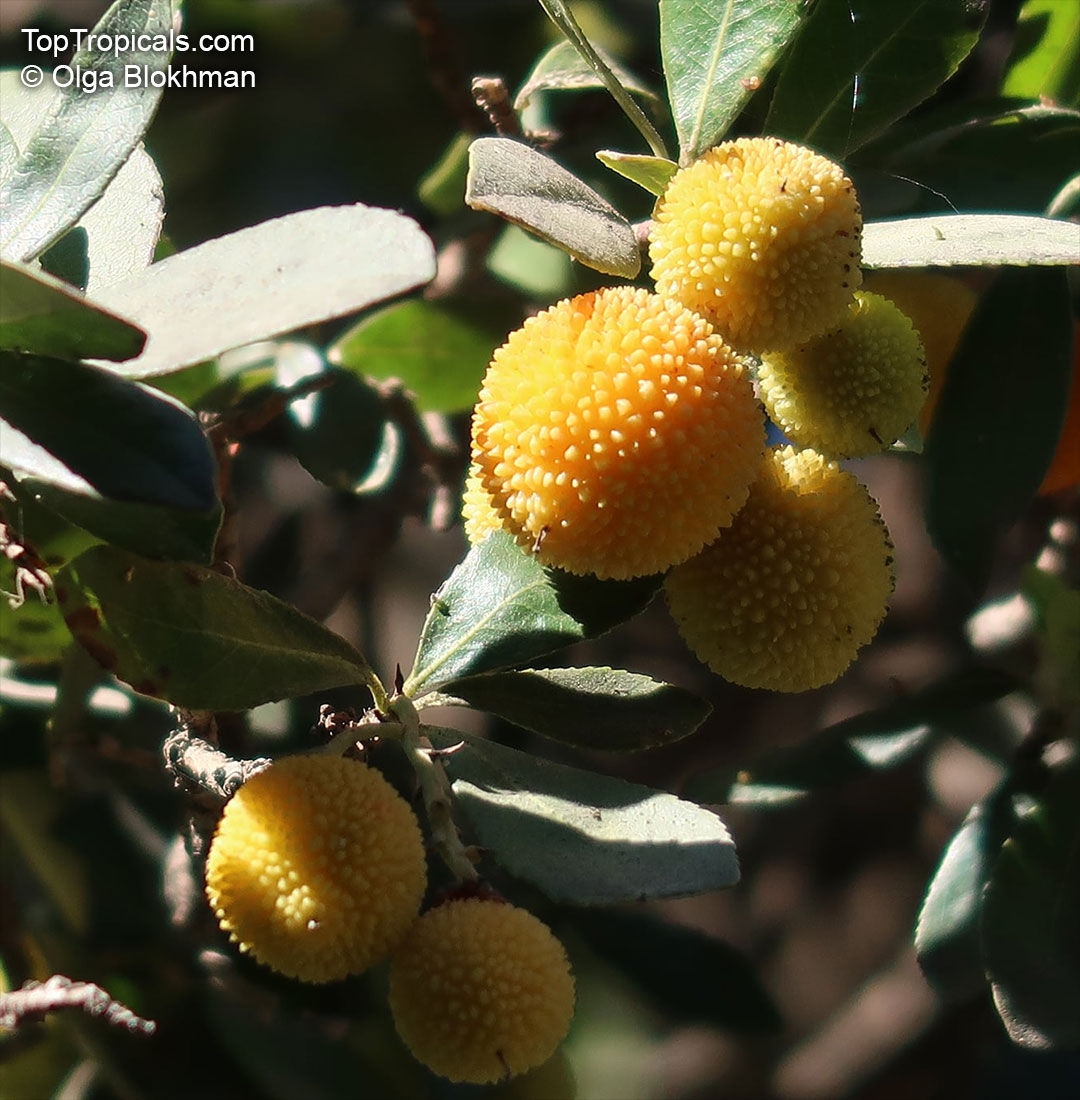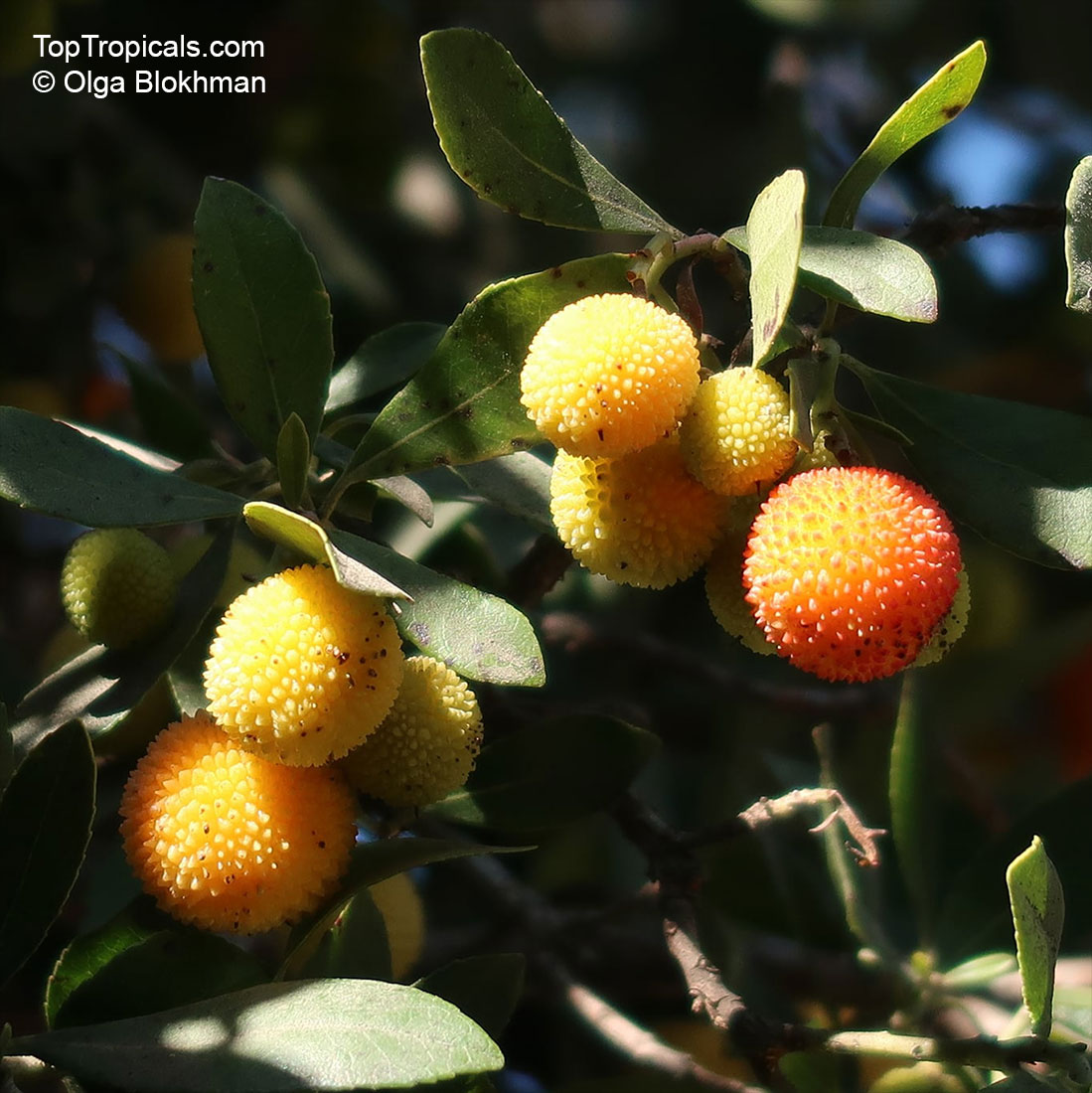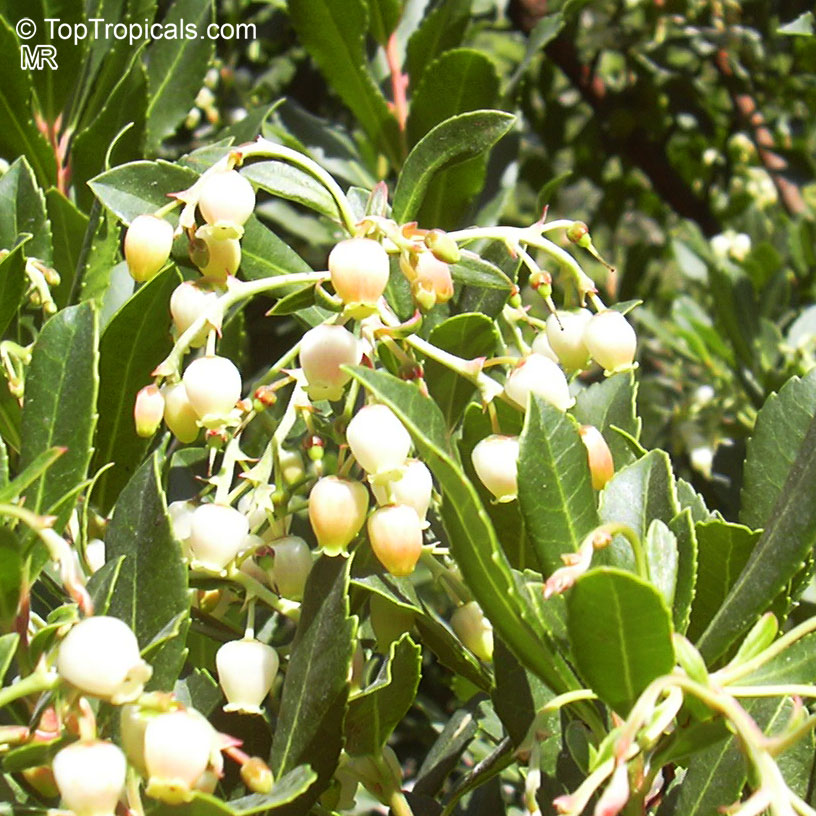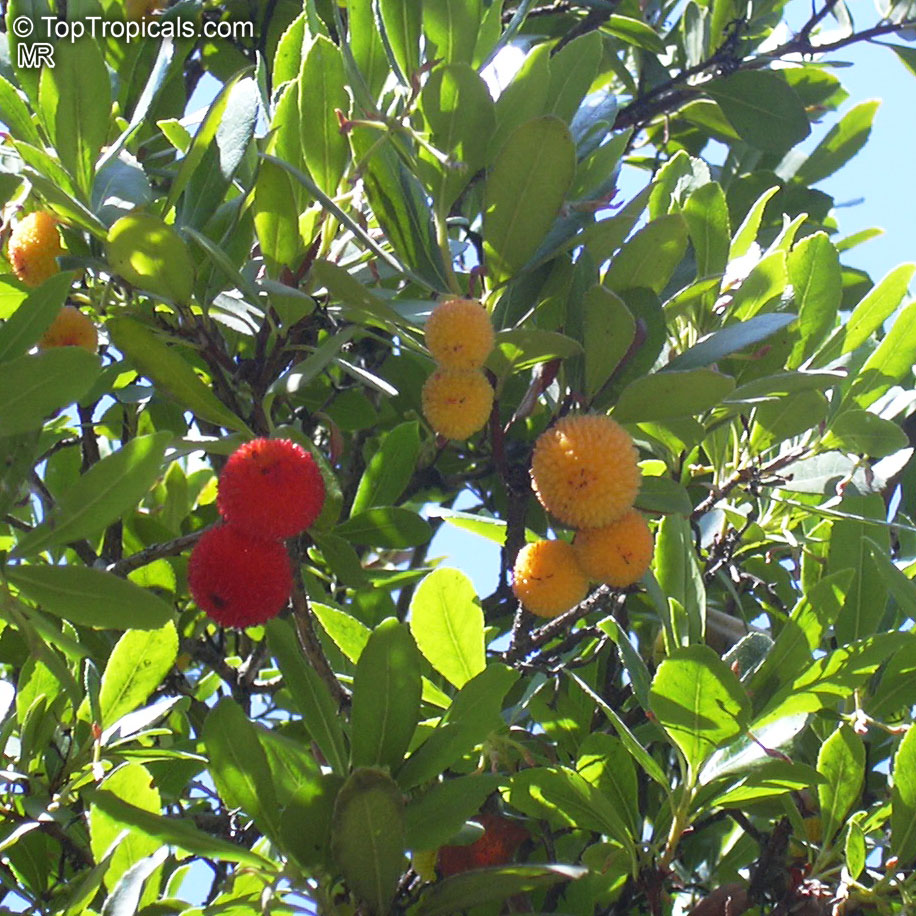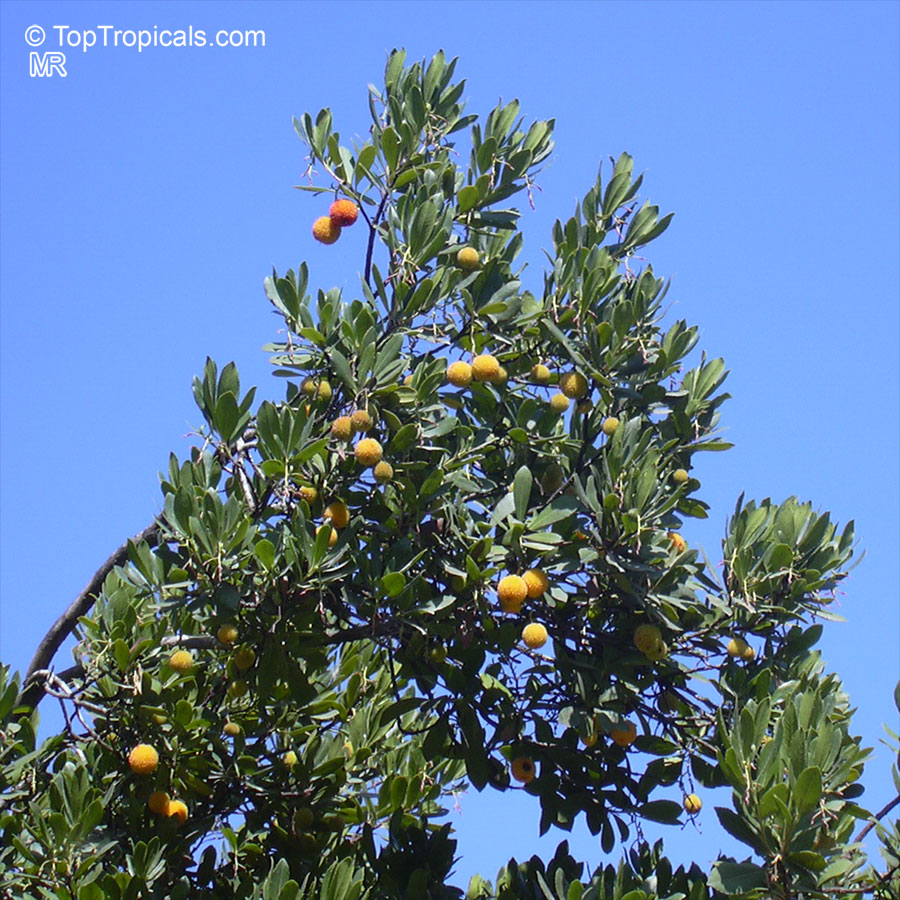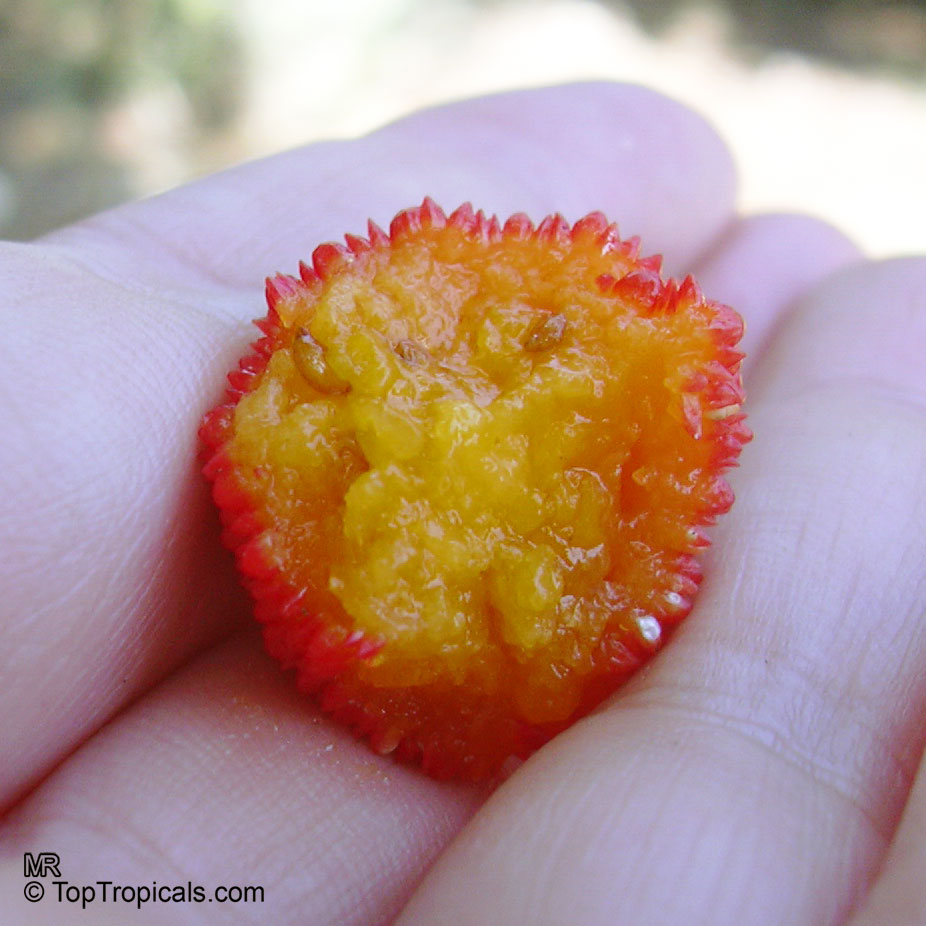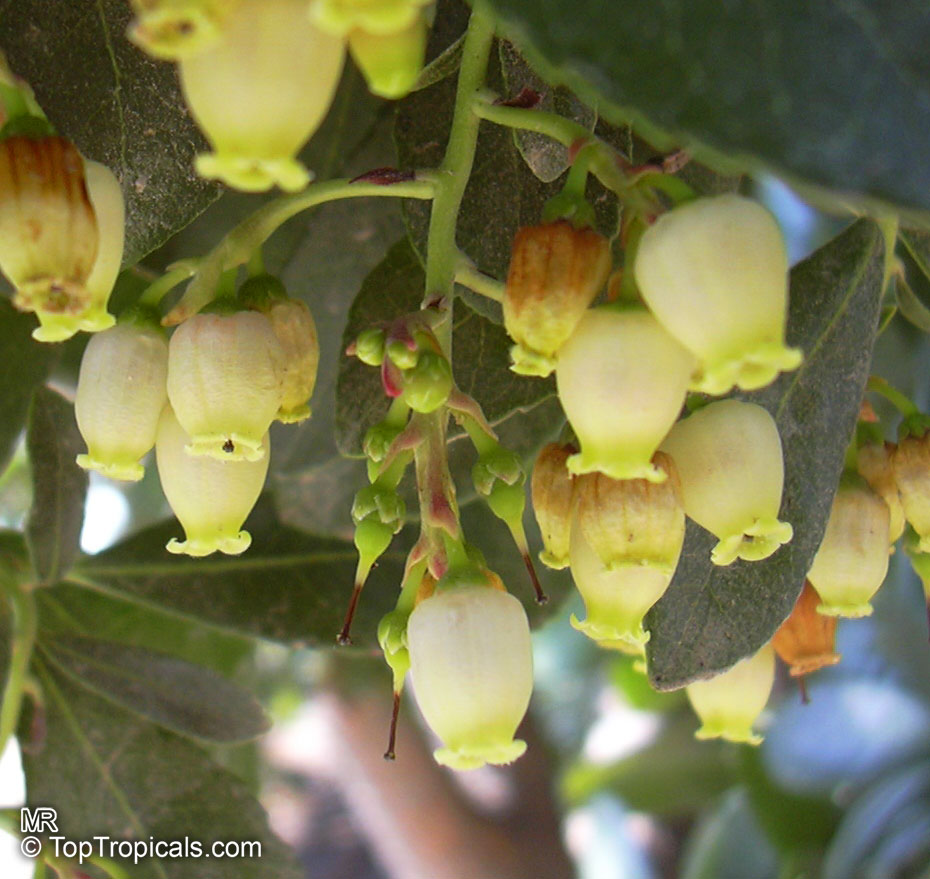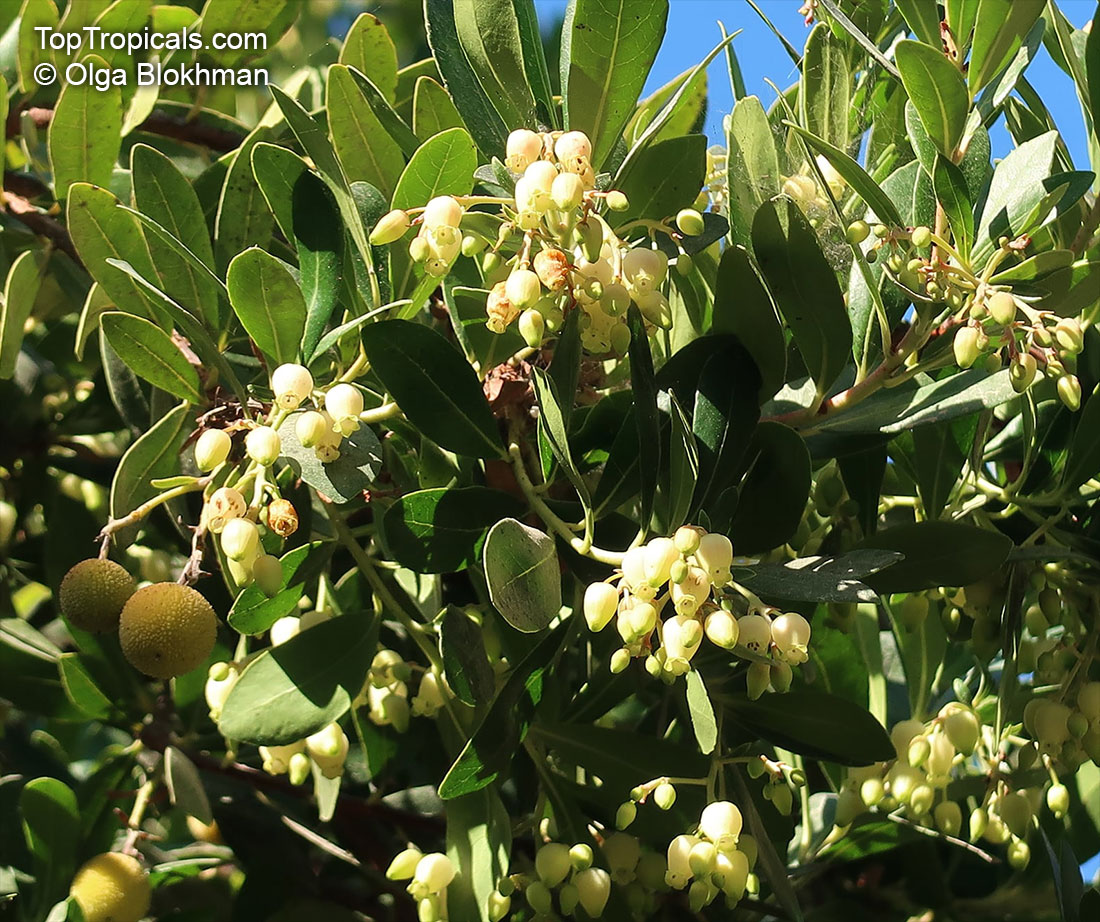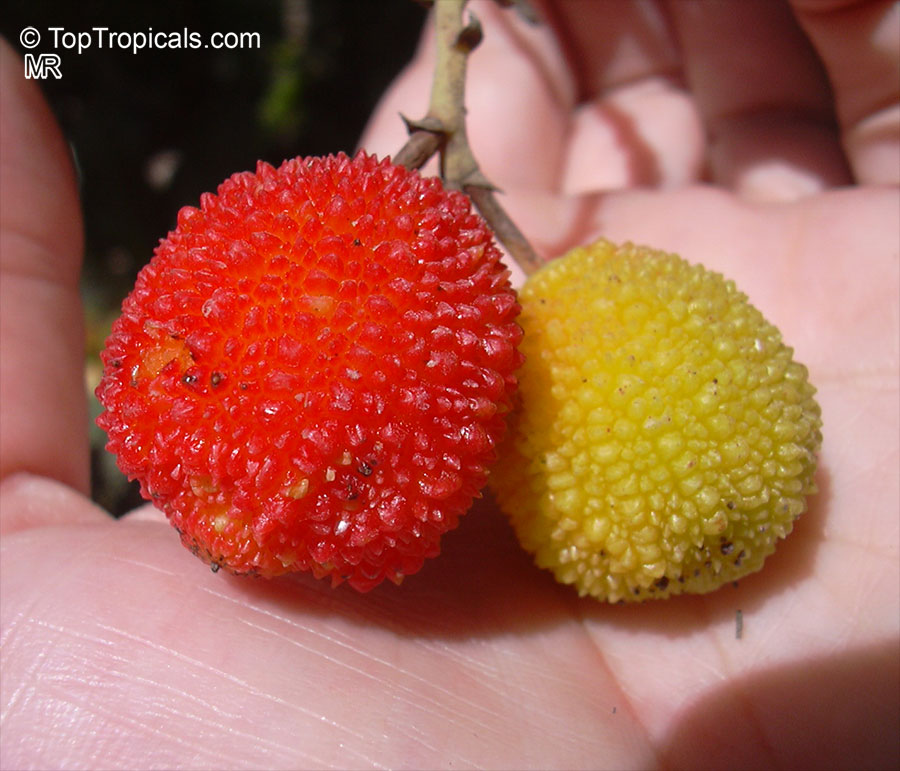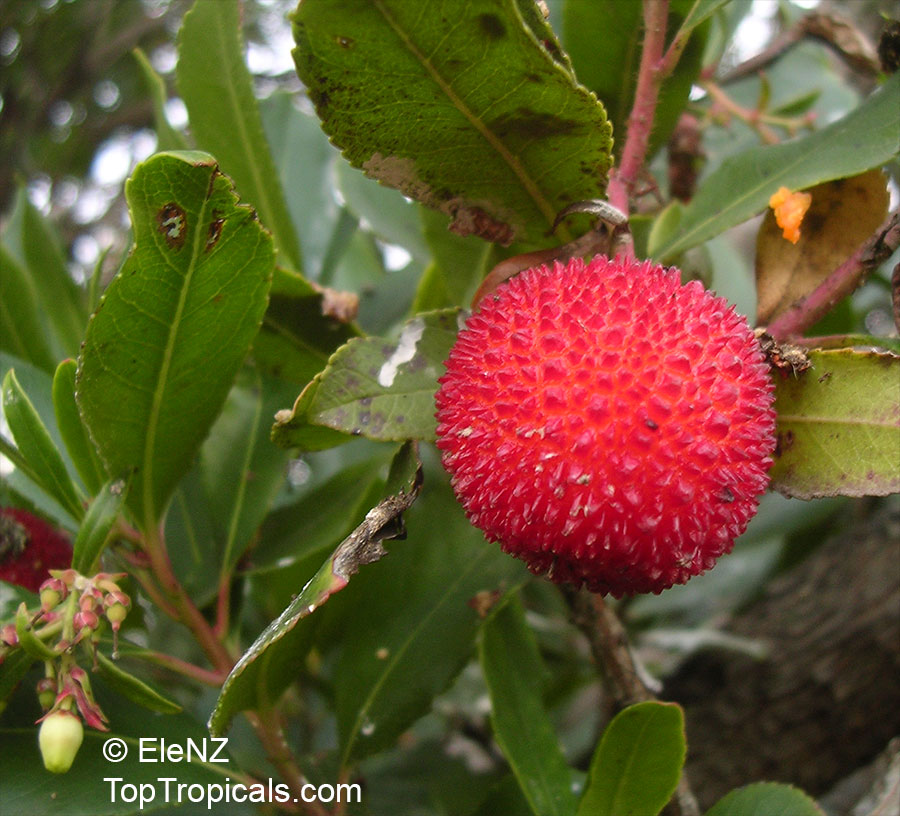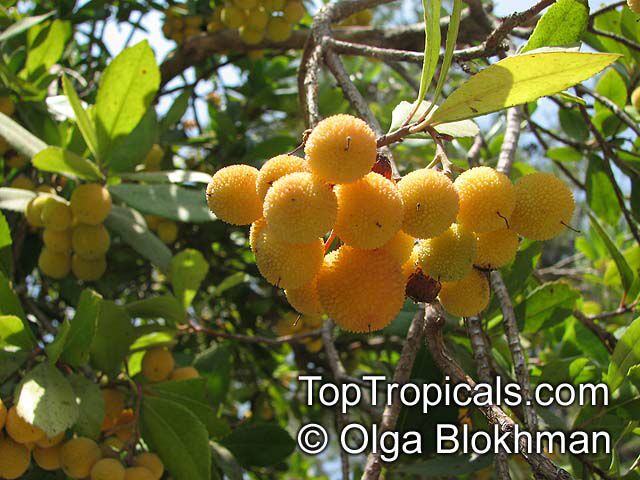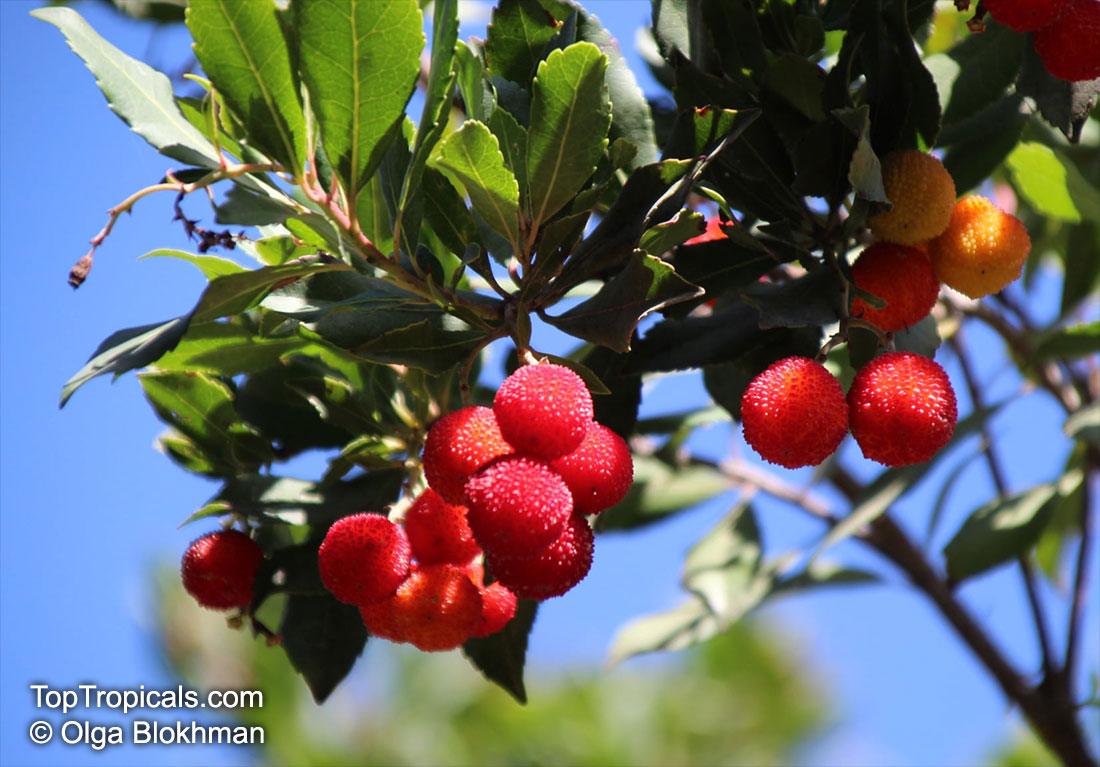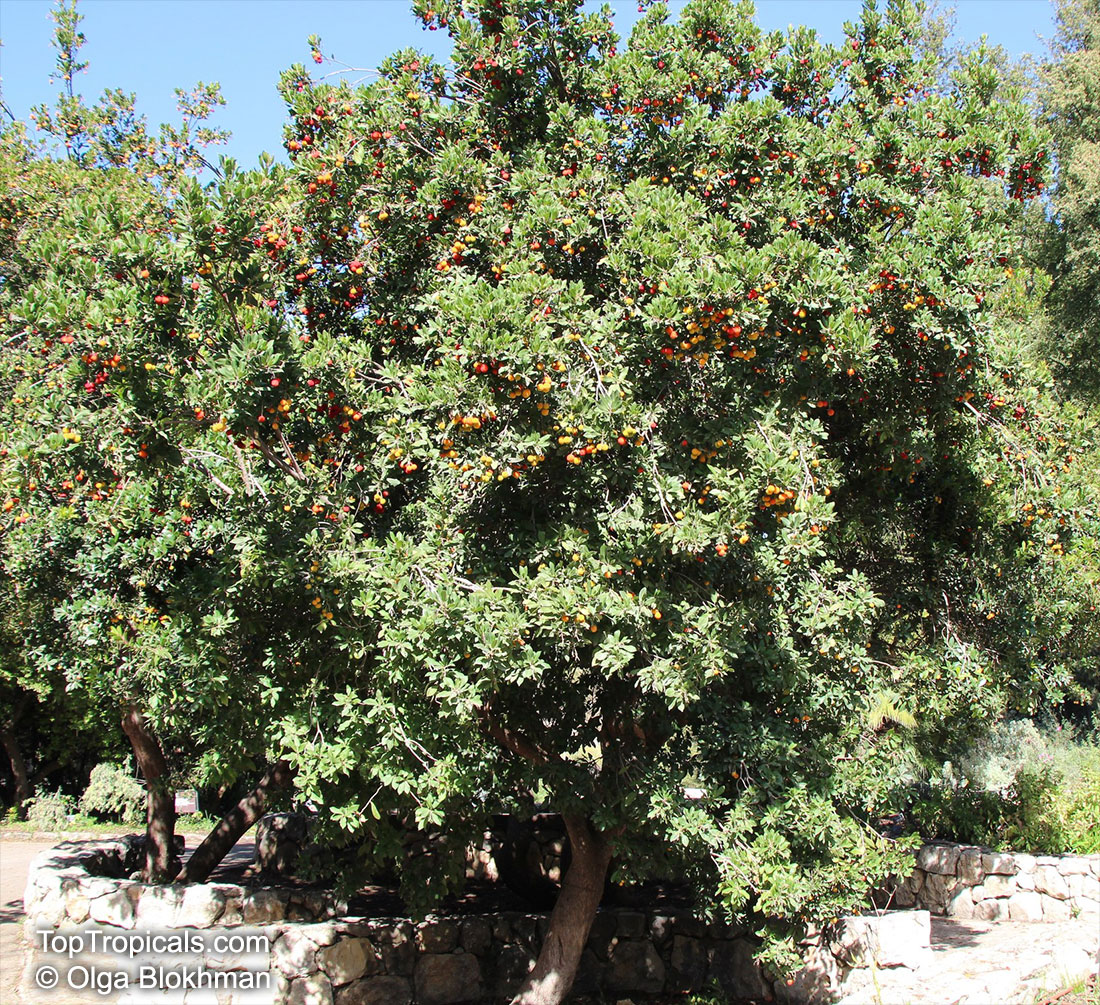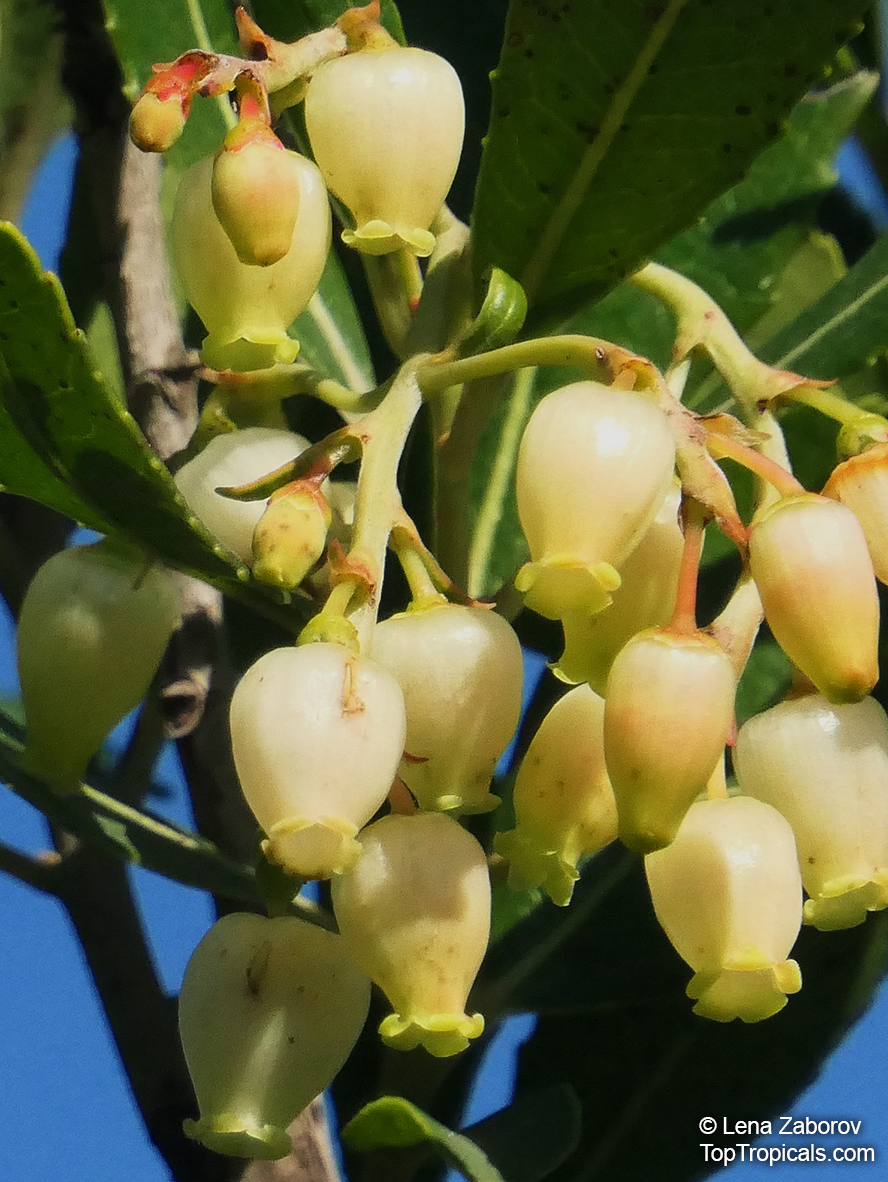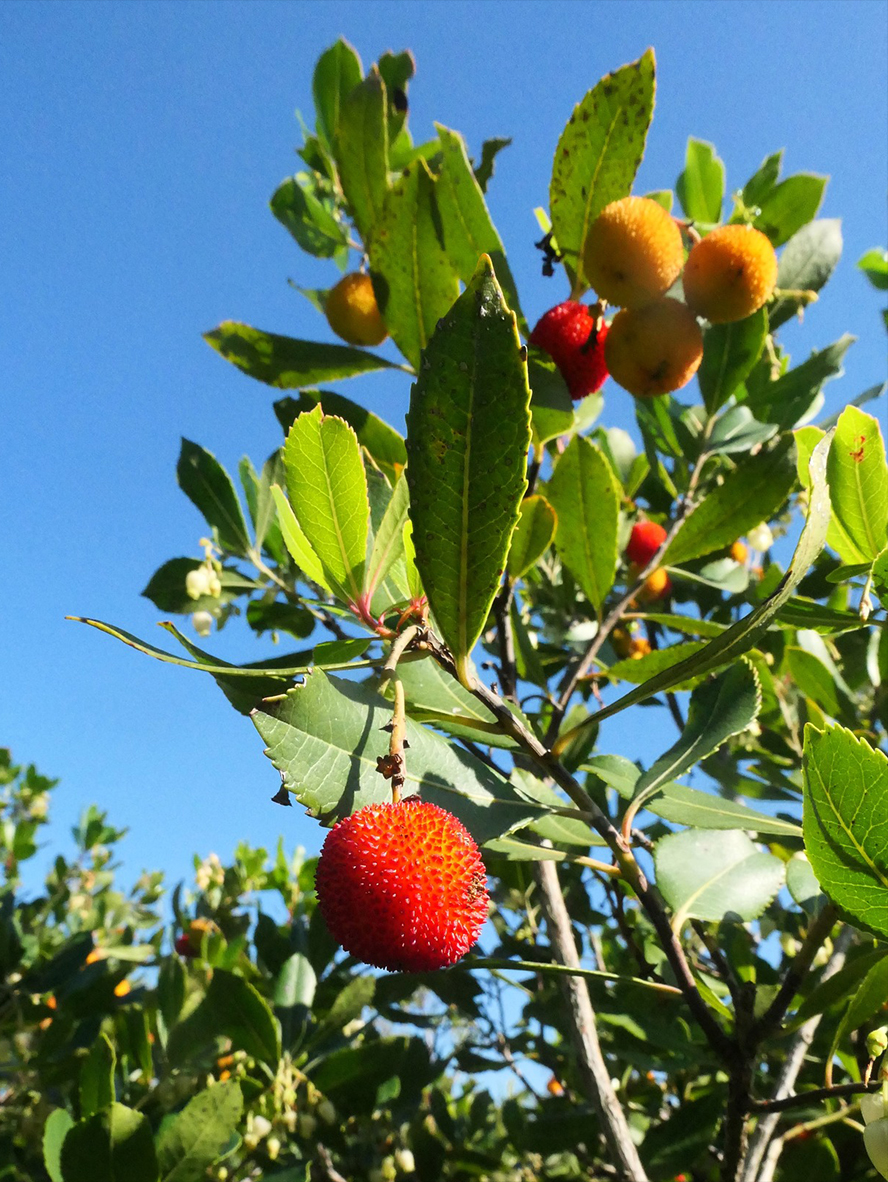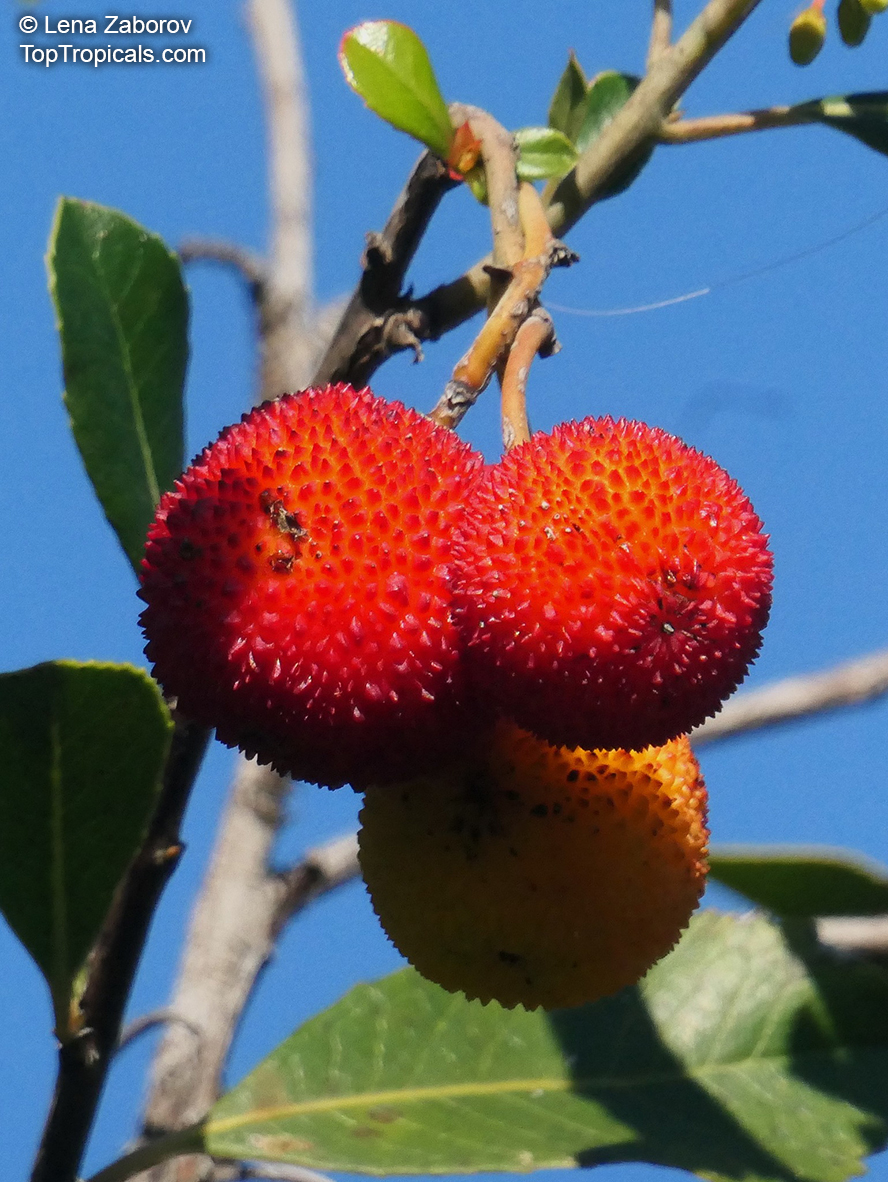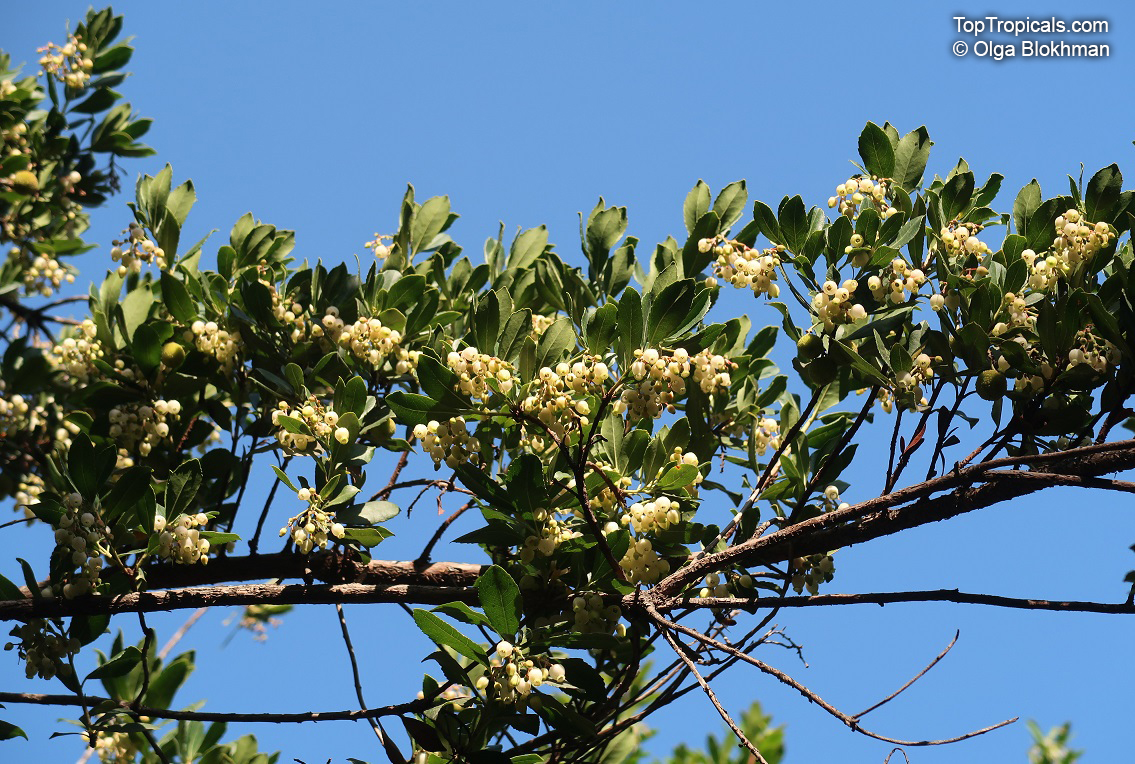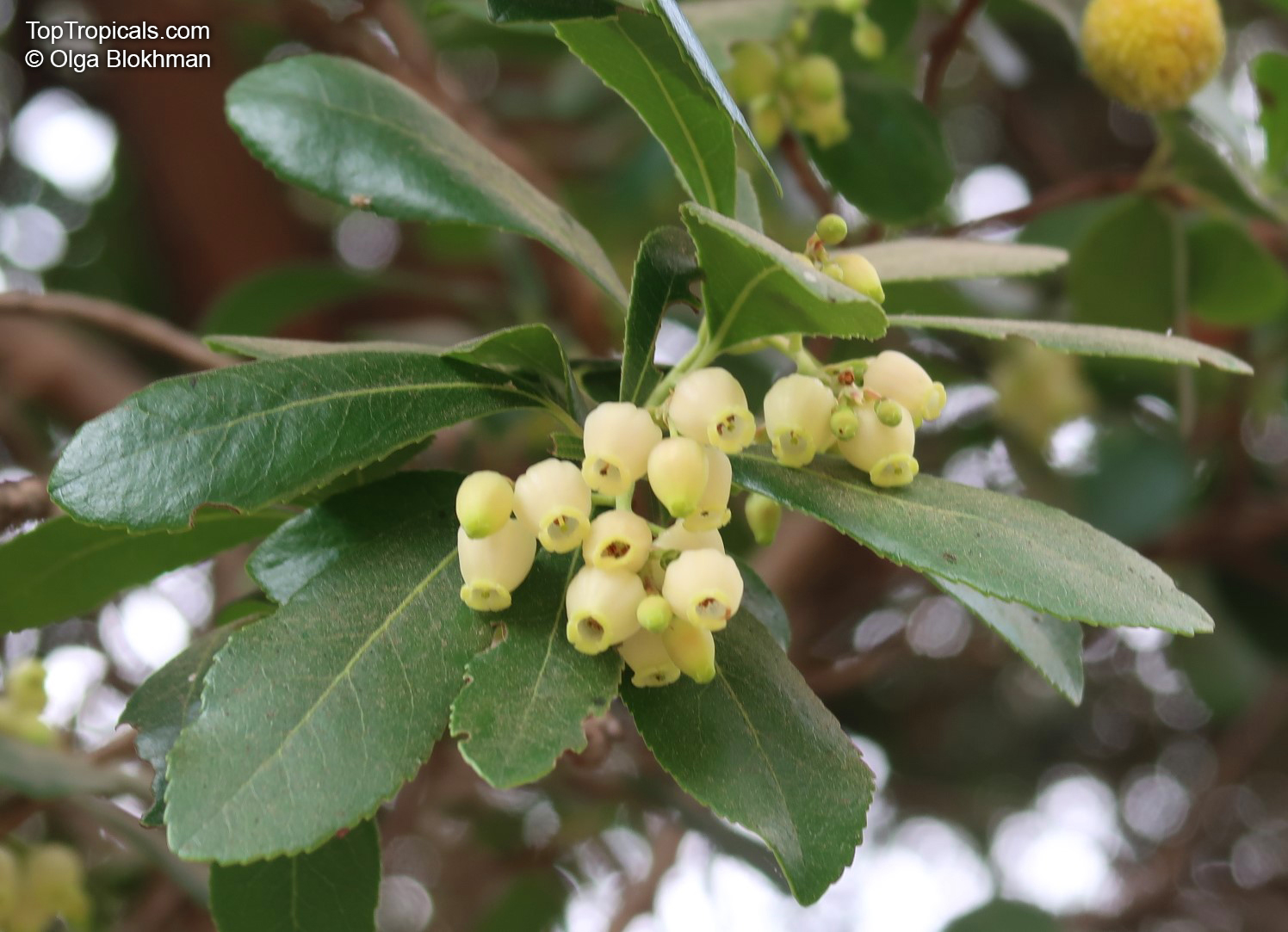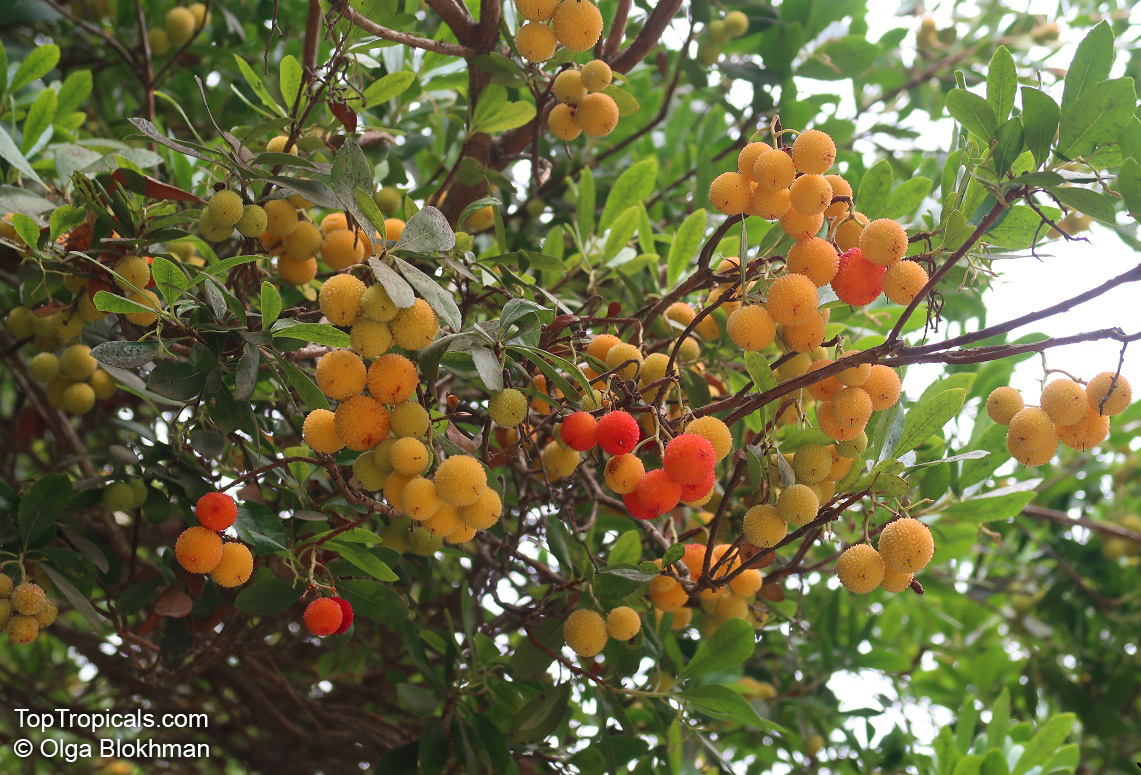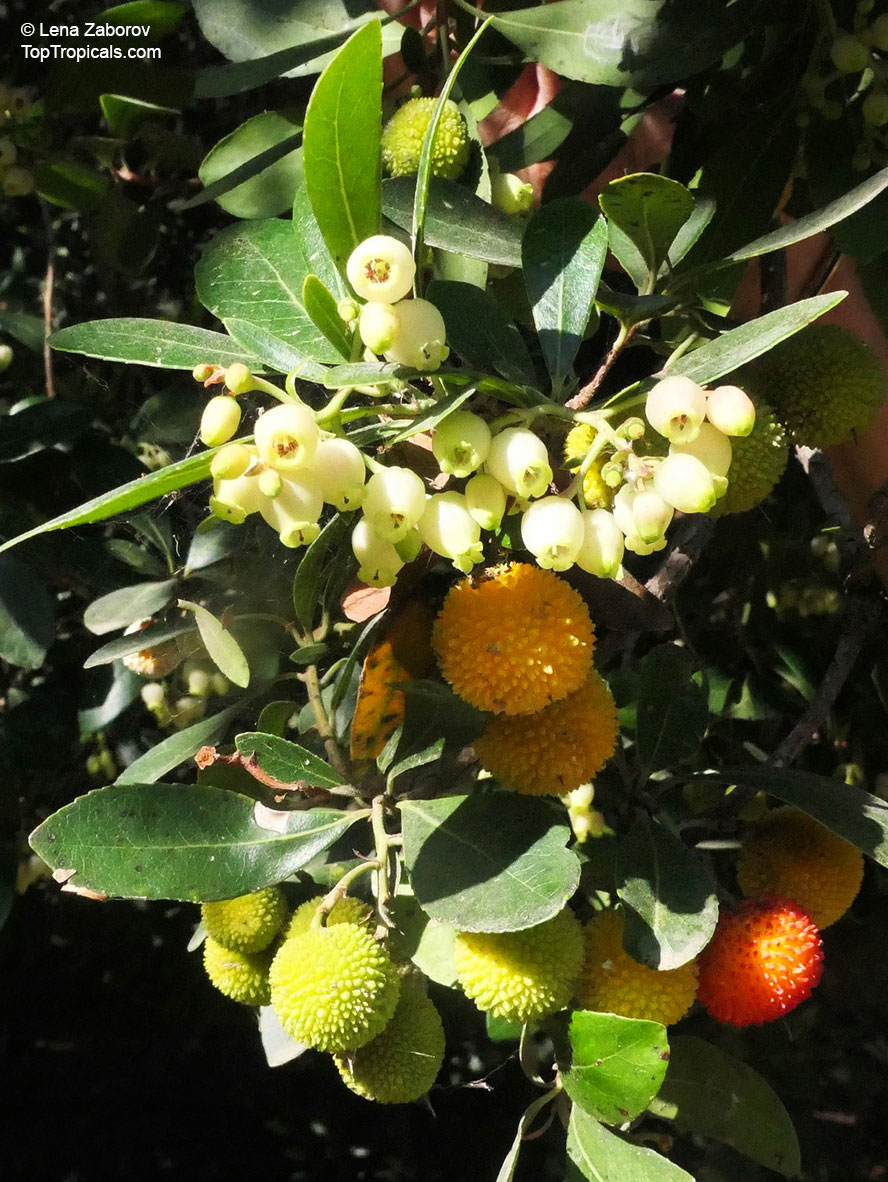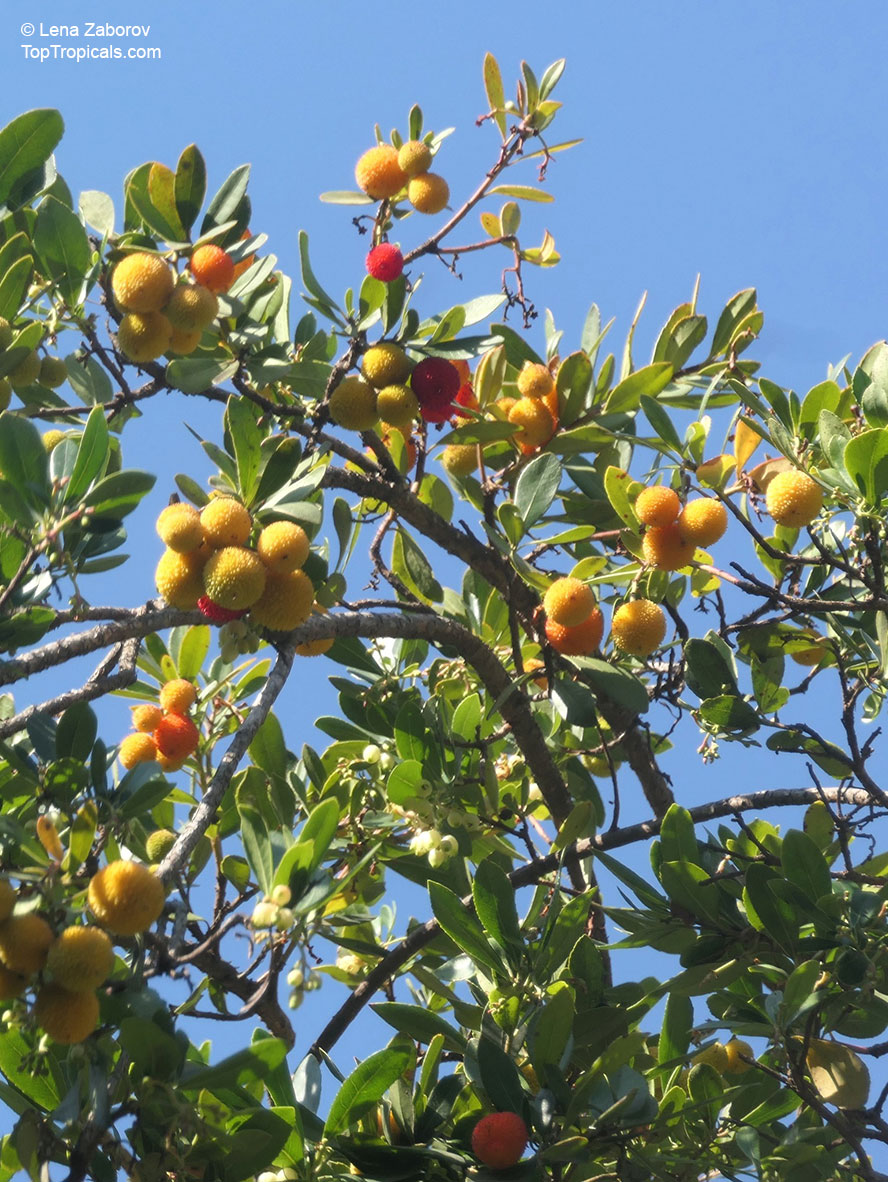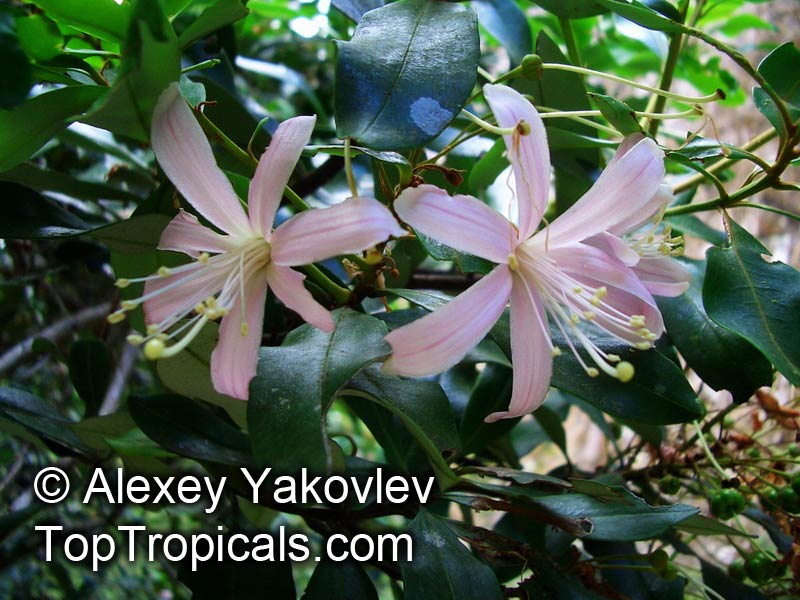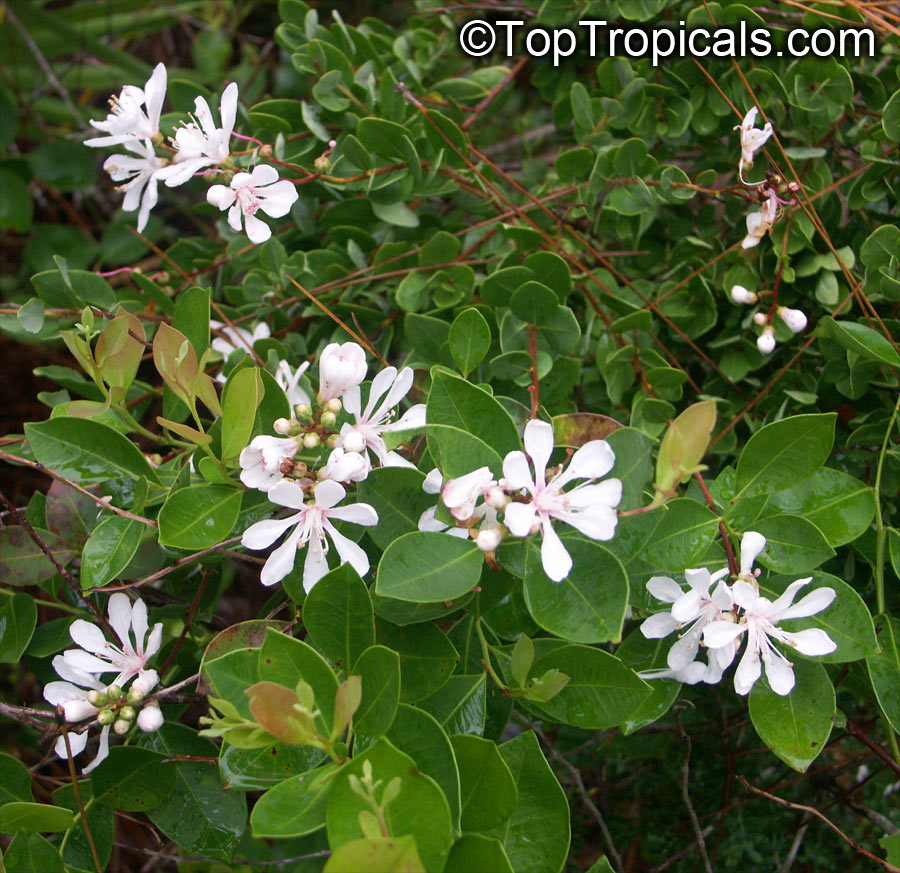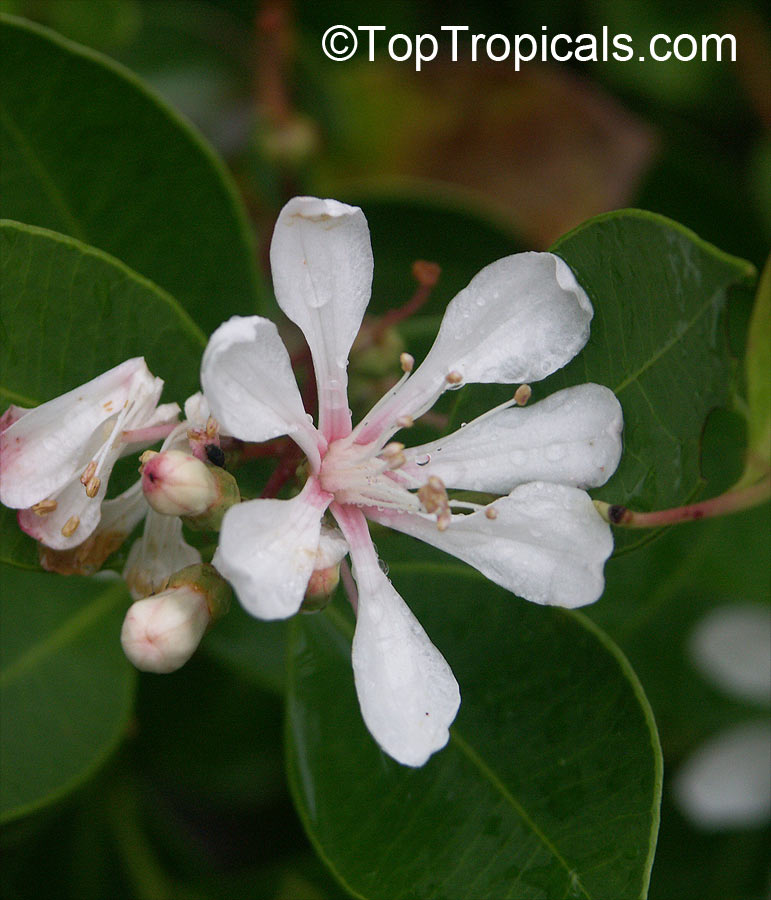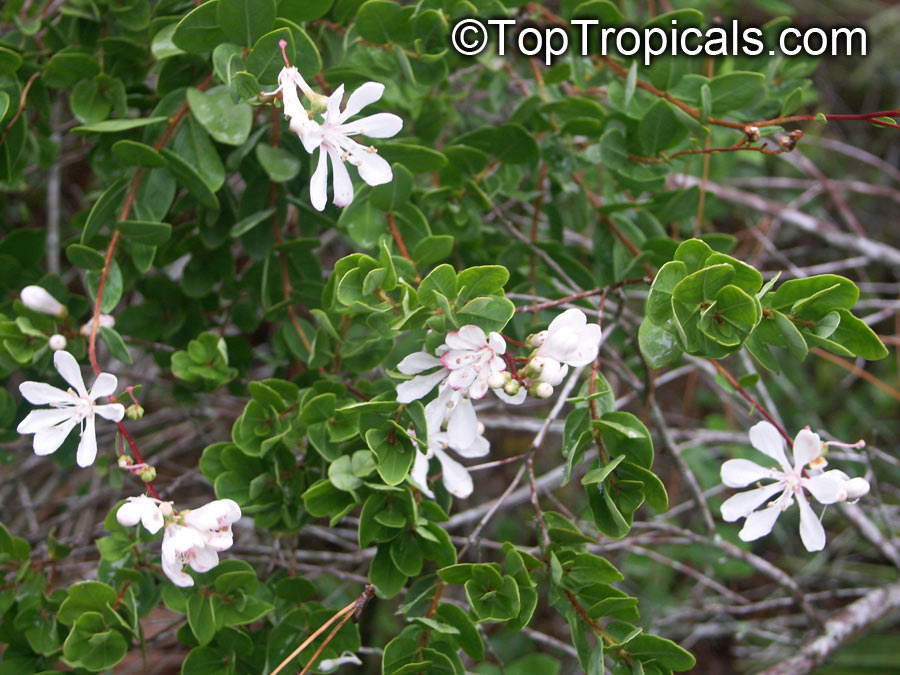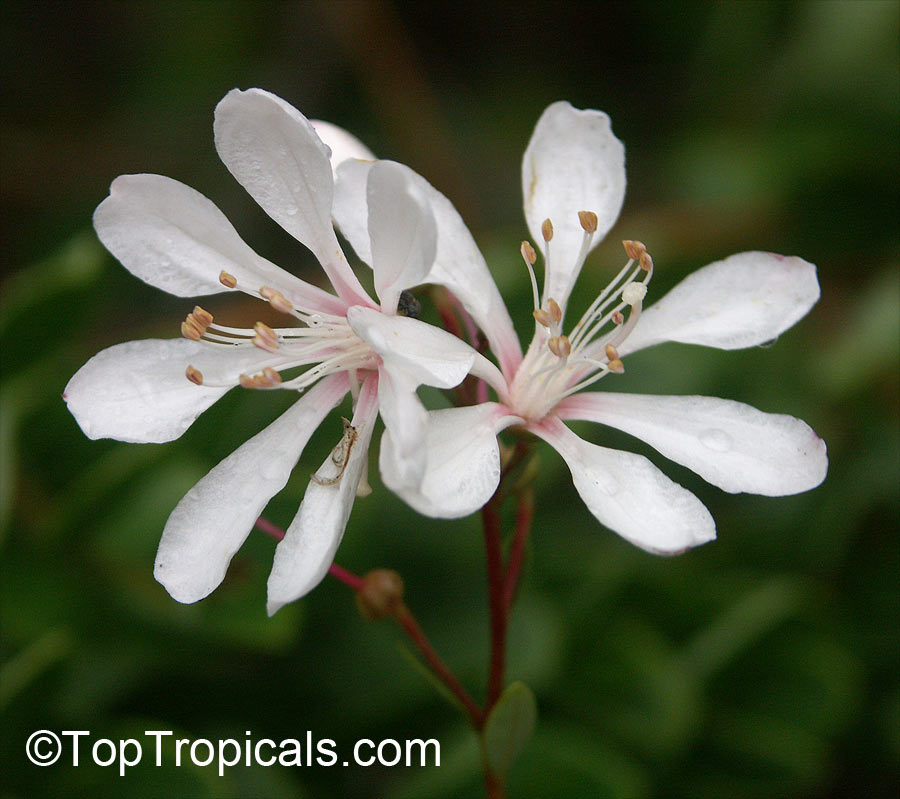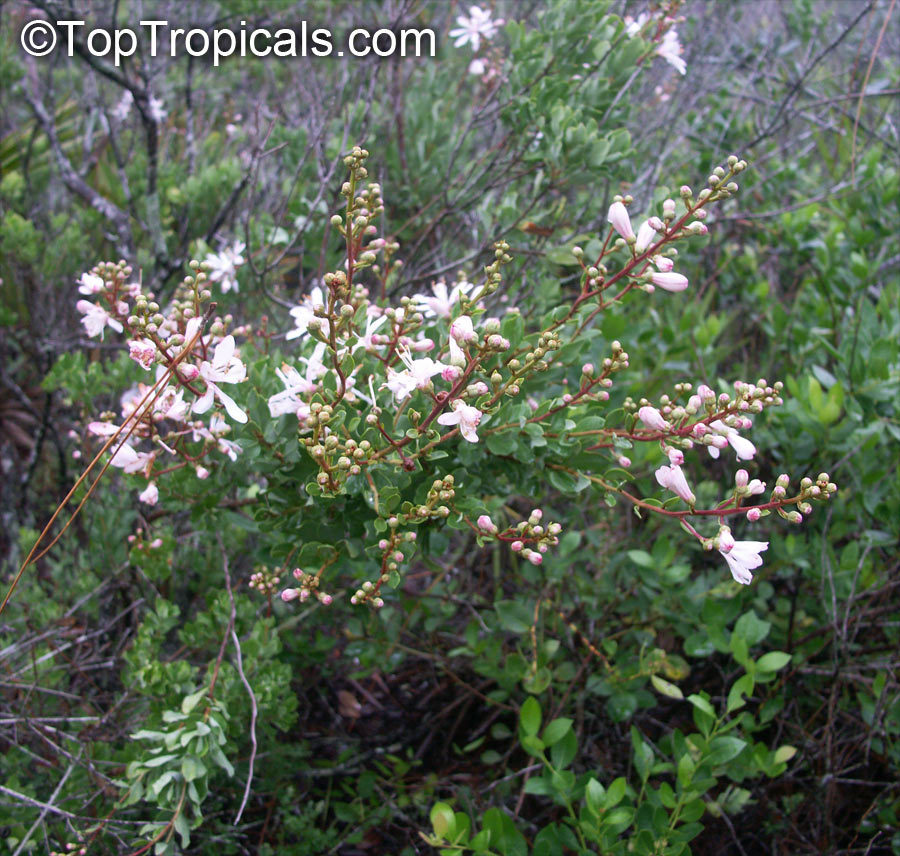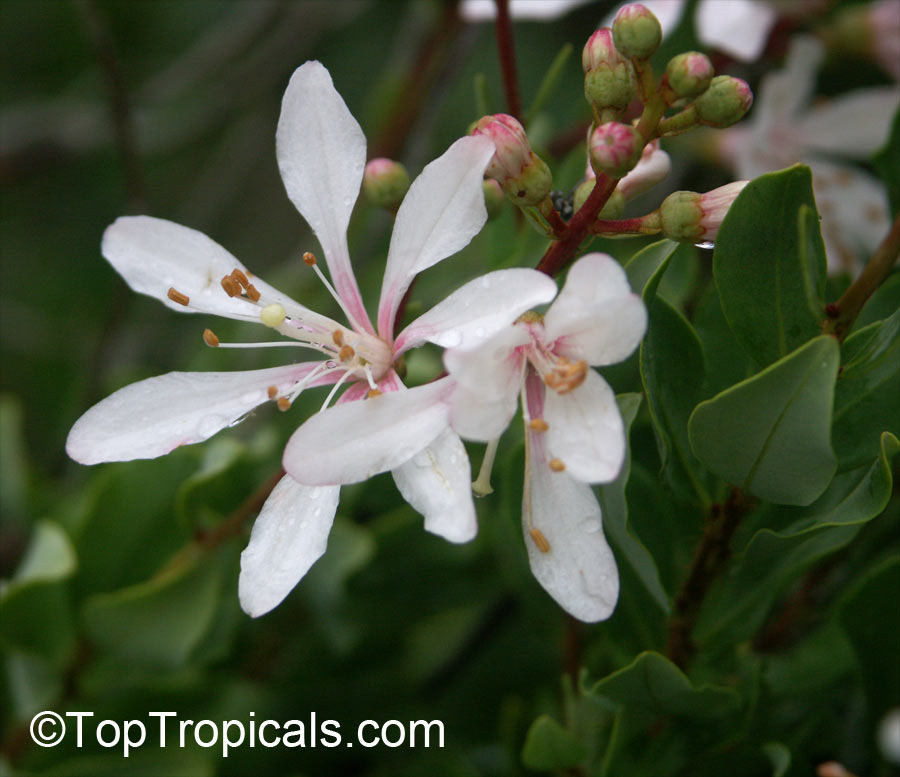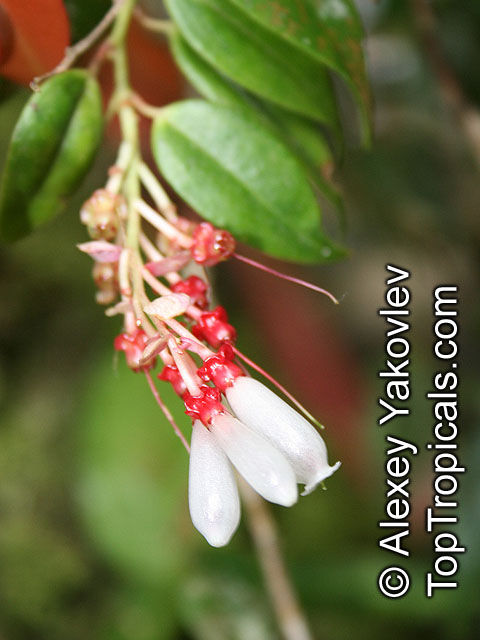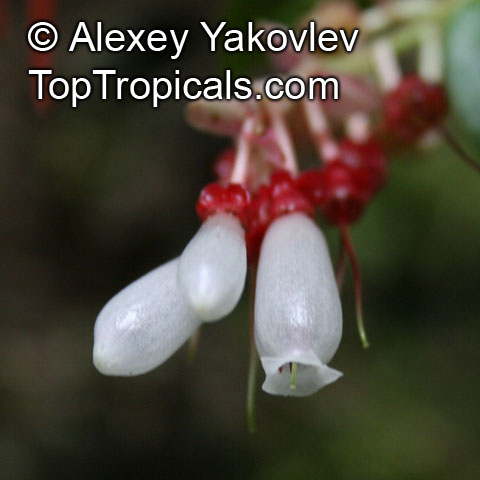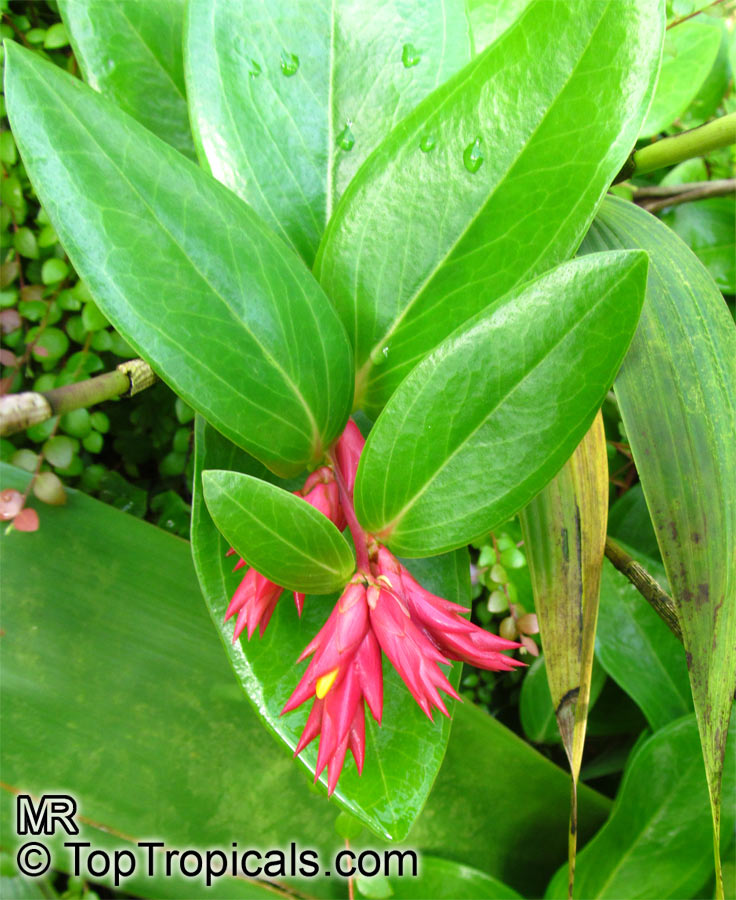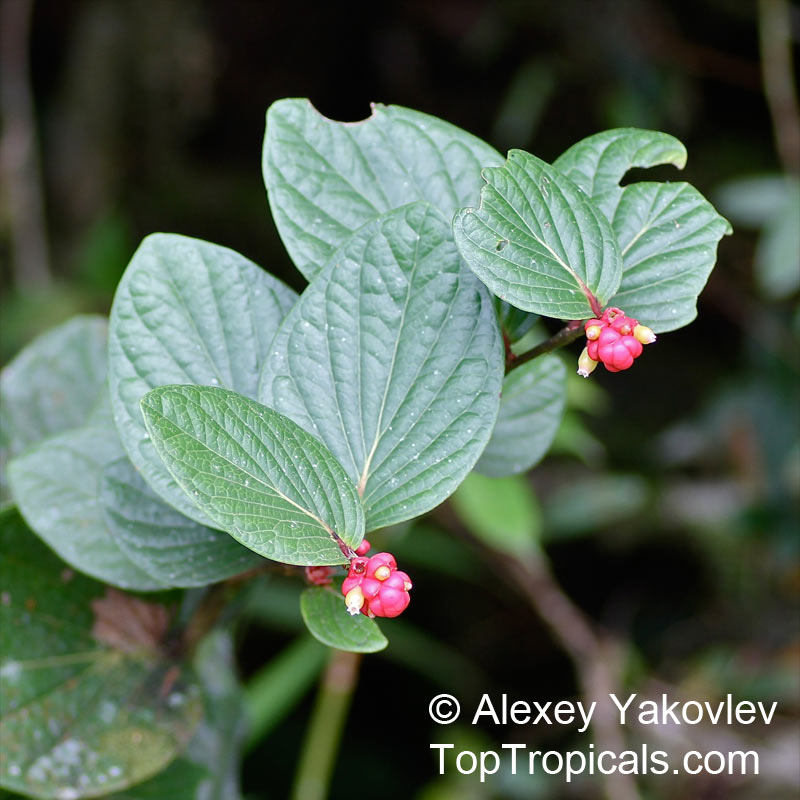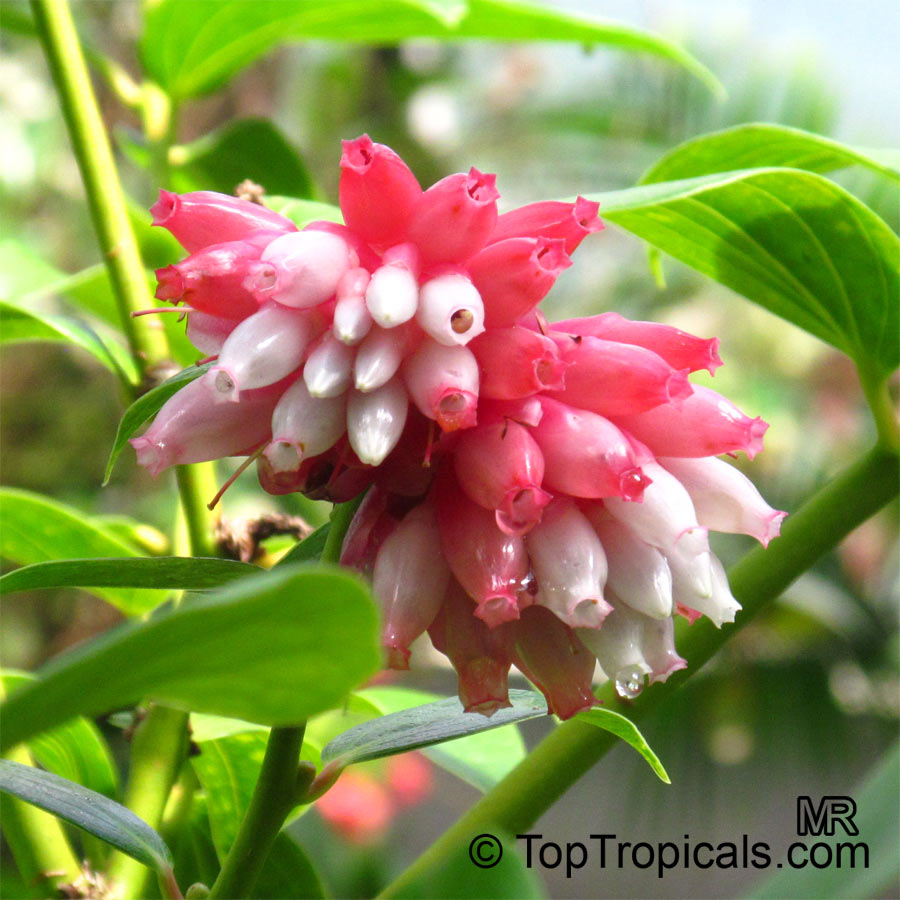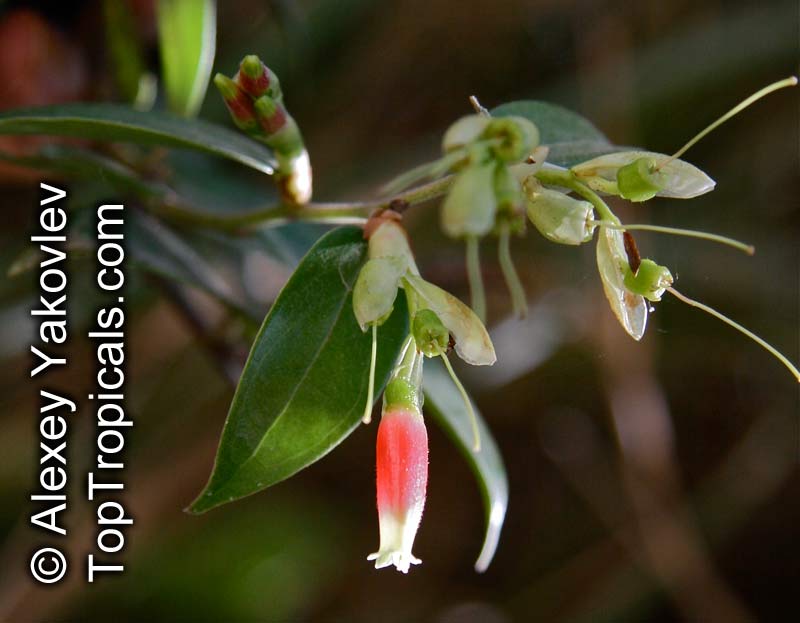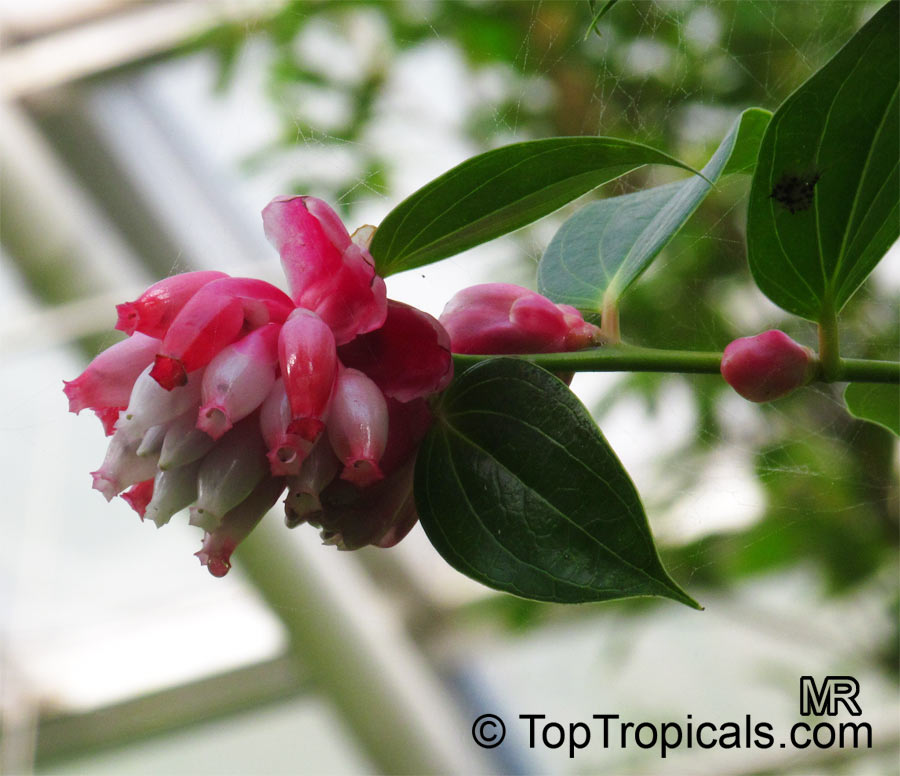Ericaceae - Botanical Family
Top Tropicals Plant Encyclopedia
| Number of plants found: 51 | Next | 
|
Go to page: | 1 | 2 | 3 | 4 | 5 | Last |
Botanical names: Agapetes serpens, Vaccinium serpens
Common name: Creeping Agapetes
Family: Ericaceae
Origin: Himalayas






Agapetes serpens is an evergreen perennial, also known as Creeping Agapetes. It can be grown as a groundcover, or as a small shrub, depending on its cultivation and environment. Growing from 2 to 5 feet in height, this hardy species loves semi-shade and will thrive best with regular watering.
Agapetes serpens is best known for its beautiful red, crimson, and vinous flowers. The petite blooms are incredibly rich-looking, resembling delicate little Chinese lanterns with their chevron patterns. Not only are these flowers stunning, but they also attract butterflies, hummingbirds, and other wildlife. Once the flowers finish blooming, they're replaced by colorful and shiny berries, which look like lavender pearls.
Agapetes serpens is hardy in USDA Zone 9-11 and can tolerate cold temperatures. Those growing in cooler zones should ensure they plant the shrub in a pot so they can be moved indoors when needed. This will also help keep the leaves safe from extreme cold weather and frost. Indoors, reasonably moist soil and warm indoor temperatures should be maintained for best results. When planting outdoors, ensure that the soil does not become too dry, and water regularly during dry spells. Pests are generally not a problem and regular pruning is advised to keep the bush looking its best.
Agapetes serpens is a stunning low-growing plant that has graced gardens for many generations. Its unique flowers, vibrant berries, and lush foliage adds a unique sense of grace and wonder to any garden. With proper planting, maintenance and care, Creeping Agapetes will continue its spread from the Himalayan foothills to garden settings all over the world.
Botanical name: Andromeda polifolia
Common name: Bog Rosemary
Family: Ericaceae
Origin: N. Europe, N. Asia and northern North America








One of several broadleaf evergreen bog shrubs.
Distinguished from other bog shrubs by shape and bluegreen color of leaf.
Bog, often on floating mats of vegetation.
Cool, acidic soil (pH of 4.5-5)
Botanical name: Anthopterus wardii
Common name: Neotropical Blueberry
Family: Ericaceae
Origin: Panama, Columbia, Equador







Anthopterus wardii is an evergreen, herbaceous plant with a highly variable growth pattern. Growing to 2-5 ft tall, this small shrub is native to the forests of Panama, Colombia, and Ecuador.
The foliage ranges from bright green to a dark blue-green color and is generally glossy. It prefers full sun or semi-shade to flower prolifically and is also an ethnomedical plant. In a garden setting, Neotropical Blueberry should be planted in well-draining, acidic soil and given regular watering.
The primary draw of Anthopterus wardii is the beautiful off-white to white flowers which bloom from mid to late spring. The fragrant flowers are preferred by bees and hummingbirds for foraging, though the berries that follow are toxic to humans. It is suitable to be grown in USDA Zone 9-11, and may require winter protection in colder regions. It will do best in a planter with its root system kept moist, in order to protect it from freezing temperatures.
Anthopterus wardii is a low-maintenance plant with its care limited to keeping its soil moist, but not sopping wet or saturated. Pruning any weak or dead limbs will result in the most attractive appearance. It is able to adapt to almost any garden setting, making it a great addition to any outdoor spaces that enjoy partial sun and are located in the south.
Botanical name: Arbutus andrachne
Common name: Grecian strawberry tree
Family: Ericaceae






Arbutus andrachne is a small tree native to the Mediterranean, typically growing to a height of between 10-20 feet. It prefers full sun but is tolerant of semi-shade and moderate watering. In spring, it produces off-white and white flowers. These flowers are then followed by small, strawberry-like fruit which are a red/yellow color when ripe. Though they are edible, they are not particularly palatable, so are generally not consumed, however they are known to have many health benefits. Native to USDA Zone 7-10, it is relatively hardy to temperatures below freezing, however it should have some protection in its first winter outdoors.
This tree is a slow-grower which is why it's important to be sure you've found the right spot for it before planting, as it doesn't do well if transplanted. It requires a nutrient-rich, well-drained soil and will happily reward you with beautiful flowers in the spring and plenty of fruit in the summer. Though Arbutus andrachne hails from warm climates, it can still be grown successfully in colder regions, in pots and containers as long as you take extra care to protect it from cold weather with mulch and insulation.
Once established, the Grecian strawberry tree is drought tolerant and can produce an abundance of fruit in the peak of summer. The fruit itself can be used to make jams, jellies and syrups, as it is packed with antioxidants, vitamins and minerals. Eating the fruit can help ward off infections, boost the immune system, improve digestion and even help protect against heart disease.
Botanical name: Arbutus sp.
Common names: Strawberry Tree, Madrone
Family: Ericaceae
Origin: Mexico, North America, Mediterranean region










This group consists of beautiful, evergreen trees or shrubs. They grow wild in North, South and Central America, Mexico, Asia Minor, southern Europe and the Canary Islands. They only grow from 10 to 20 feet high. A. andrachnoides is a hybrid small tree with attractive cinnamon-red branches that are covered with green leaves slightly edged with red.
Botanical name: Arbutus unedo
Common name: Strawberry Tree
Family: Ericaceae
Origin: Europe and the Mediterranean







The Strawberry tree (Arbutus unedo) can grow up to 30-50 ft. It produces edible fruits with a pleasant taste. These small fruits can be used to make jams, liqueurs, and other deserts. With a higher content of antioxidants, minerals, and vitamins, these fruits can also be beneficial to your health.
The strawberry tree produces masses of beautiful white flowers in November and December. Its flowers attract butterflies, hummingbirds and other beneficial insects, making it an excellent choice for a wildlife garden. Since the fruit takes 12 months to ripen, the tree carries both mature fruit and flowers at the same time and is then incredibly beautiful.
With outstanding ornamental value and edible fruits, the strawberry tree is easy to grow in USDA zones 7-10, although in colder areas it's best grown in a pot. When growing in a pot, regular watering and fertilizing is essential. In addition, regular pruning is recommended to maintain a desirable shape.
Botanical name: Bejaria aestuans
Common name: Rose of the Andes
Family: Ericaceae
Origin: Central America








Bejaria aestuans, also known as the Rose of the Andes, is an evergreen shrub that is native to Central America and can be found at altitudes of 3,300-7,000 feet. When grown in ideal conditions and USDA zones 9-11, it can reach heights of up to 20 feet, with a spread of 5-10 feet. It blooms brilliantly colored flowers in shades of pink, blue, lavender, purple, and occasionally deep red and crimson. It is a hardy plant that requires full sun to semi-shade and regular watering to ensure that the soil stays moist.
Bejaria aestuans is an excellent choice for gardeners looking to add a burst of color to their gardens. It requires little maintenance, and can be planted in groups, as hedges, borders or focal points. When grown in a pot in colder climates, Bejaria aestuans can be brought outdoors during warm periods, when the temperatures permit and moved to a warmer location during colder months. This shrub should be placed in a sunny location and receive regular watering.
With the right conditions and care, this breathtaking flowering plant will bring plenty of color and fragrance to any given space. It needs plenty of bright light, humid conditions, and well-draining soil. Additionally, consider adding a thin layer of moss on top of the soil and agitating the roots every few weeks.
Botanical name: Bejaria racemosa
Common name: Tarflower
Family: Ericaceae
Origin: Florida










Bejaria racemosa is a woody shrub with a fragrant flower found in the southeastern US states of Florida, Georgia, and Alabama.
This is a very ornamental shrub when in flower, and worthy of more attention by the native plant trade. Primarily recommended for natural landscapes. Also an accent shrub.
Botanical name: Cavendishia melastomoides
Common name: Cavendishia
Family: Ericaceae
Origin: Central America








Epiphytic or rarely terrestrial shrub, usually with pendulous branches.
Botanical name: Cavendishia sp.
Common name: Cavendishia
Family: Ericaceae
Origin: Central America, South America








Cavendishia is a genus of about 100 species of woody perennial plants, many of which are epiphytic.
Species:
Cavendishia allenii
Cavendishia axillaris
Cavendishia bracteata
| Next |  |
Use link to repeat this search:
https://toptropicals.com/cgi-bin/garden_catalog/cat.cgi?search_op=and&keyword_op=and&language=e&family=Ericaceae&number=10
&no_change_lang=1&user=tt&sale=1&first=0
